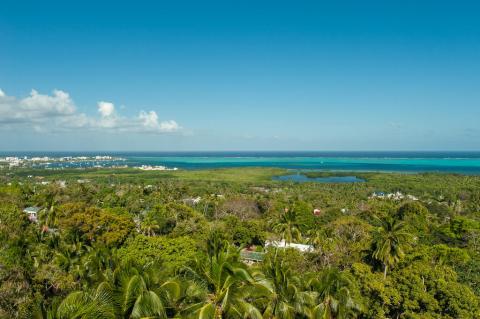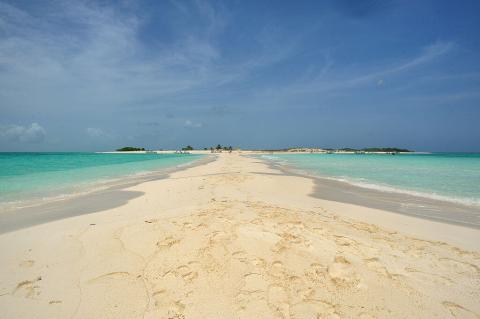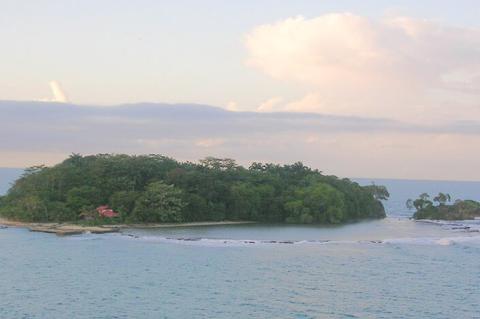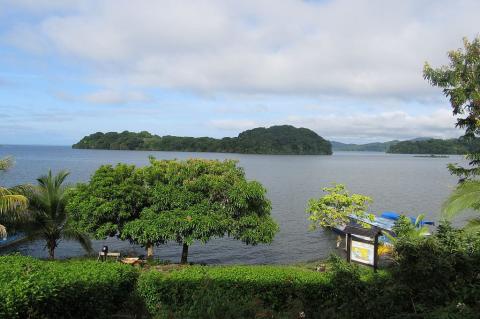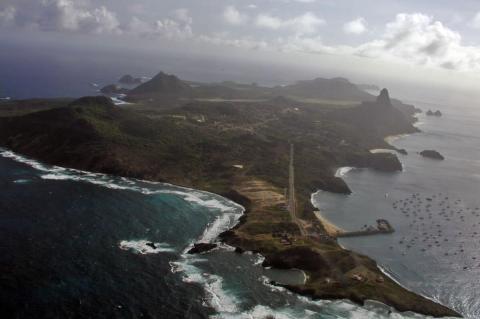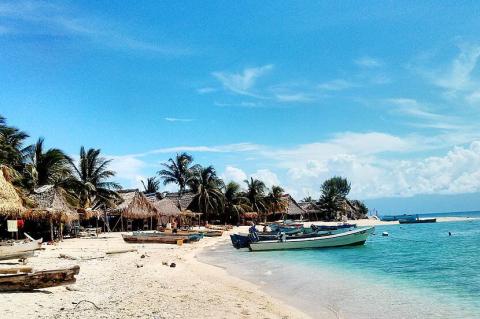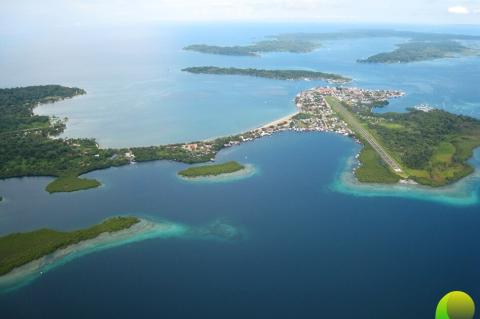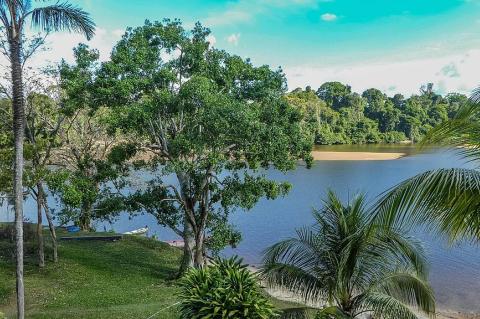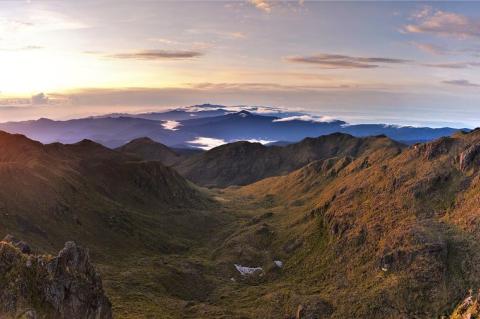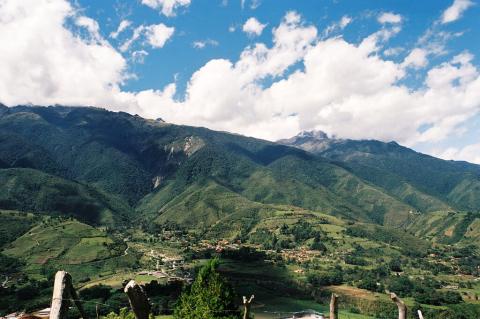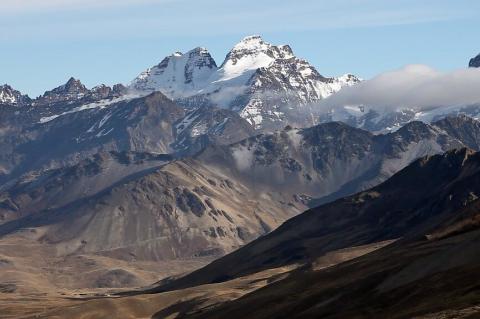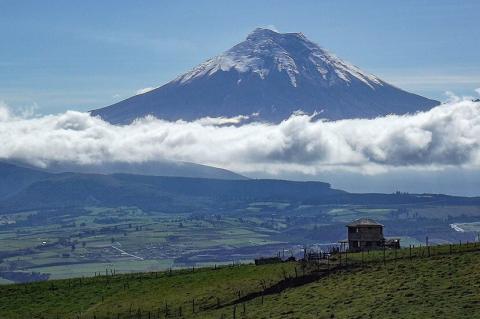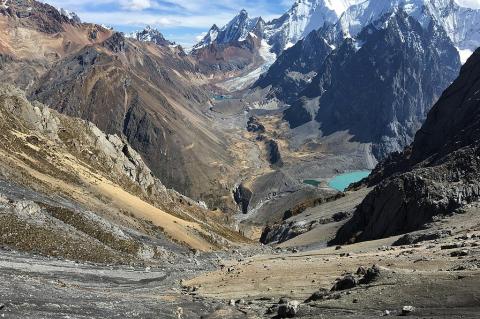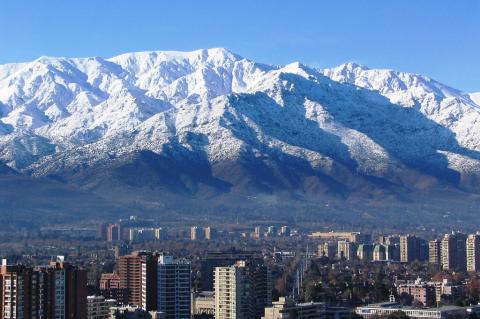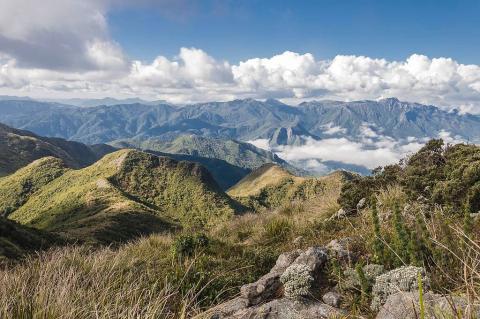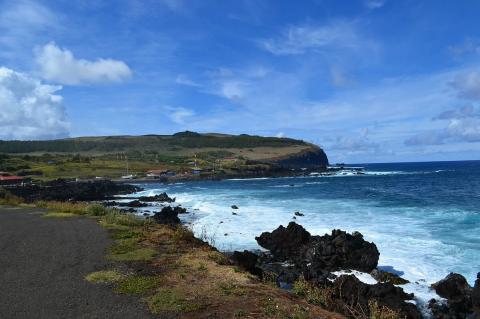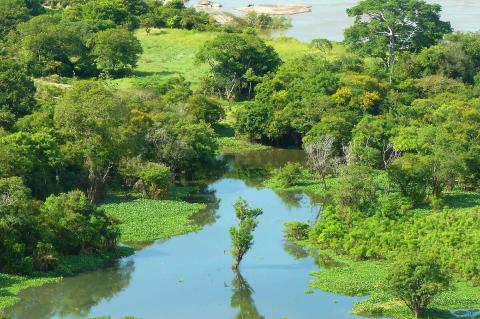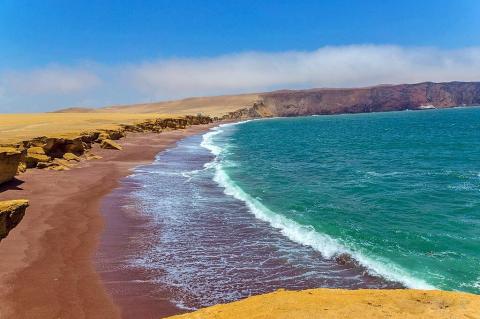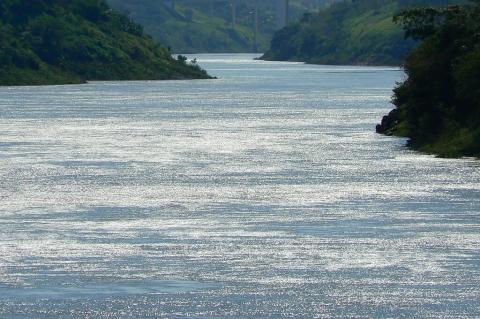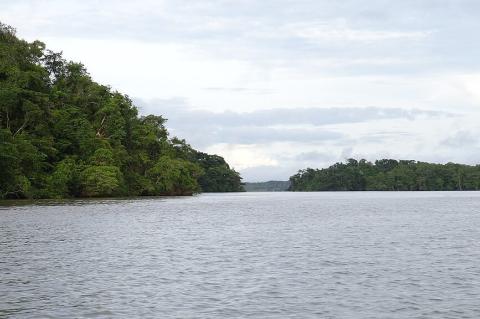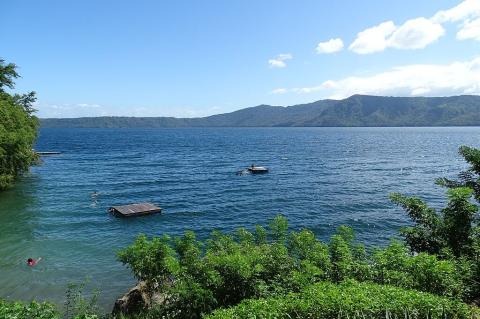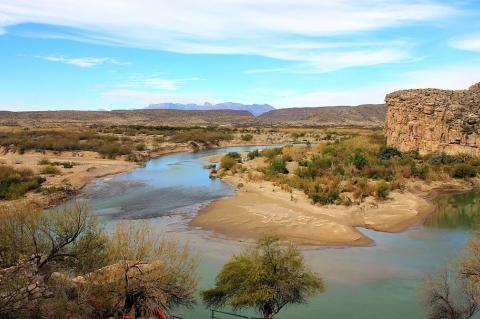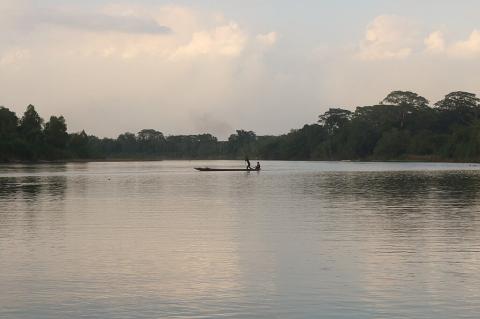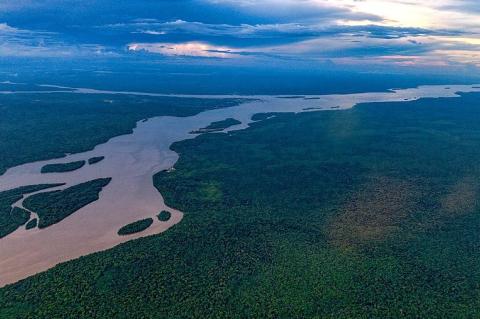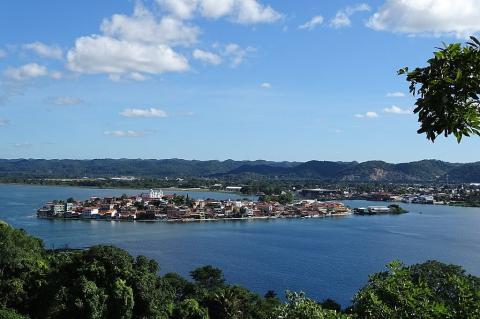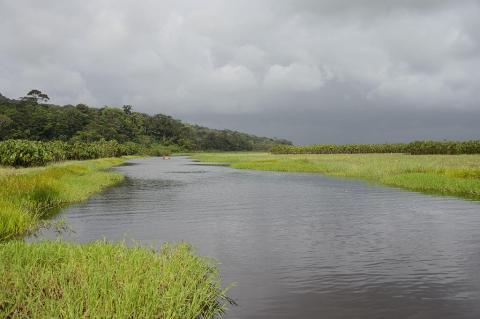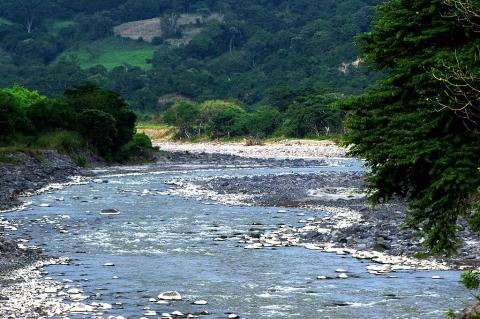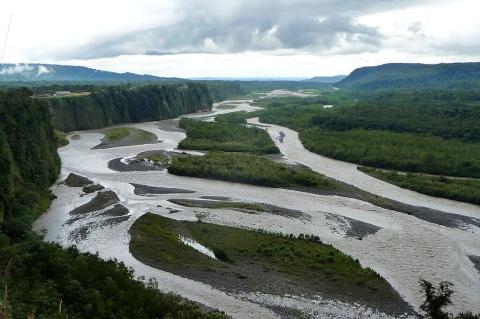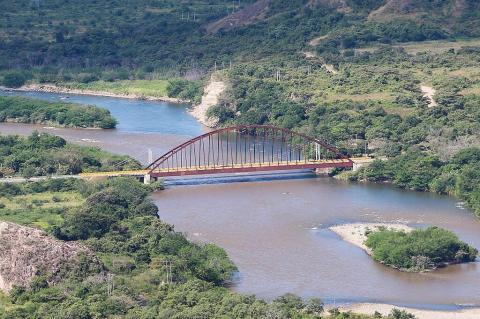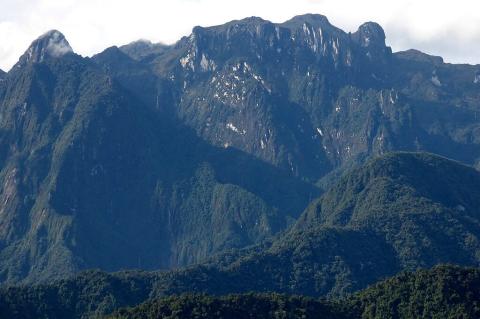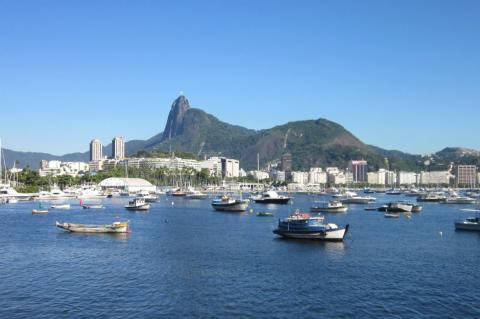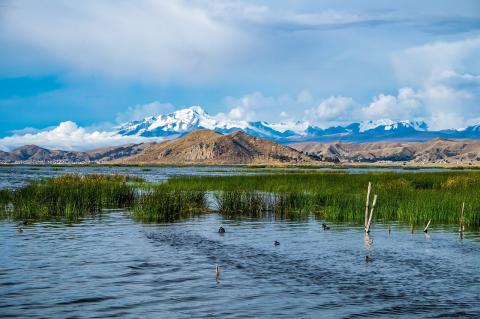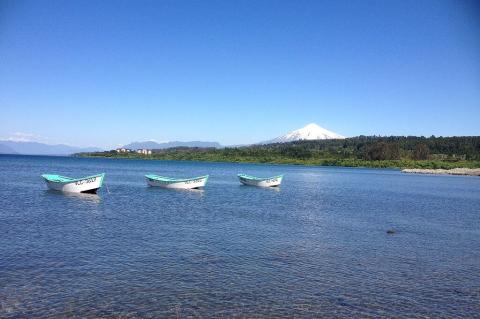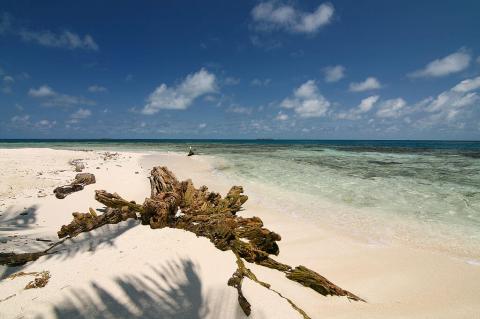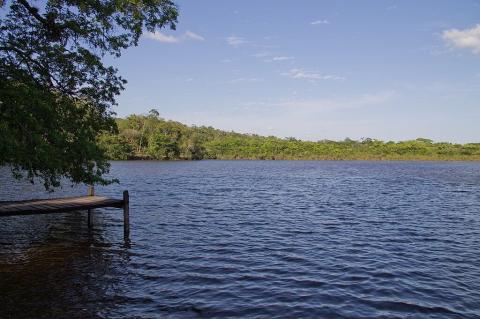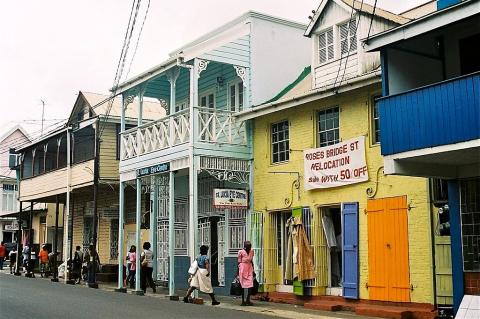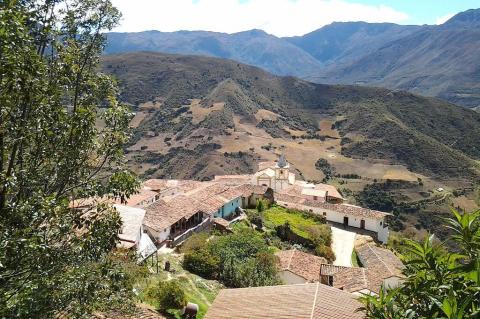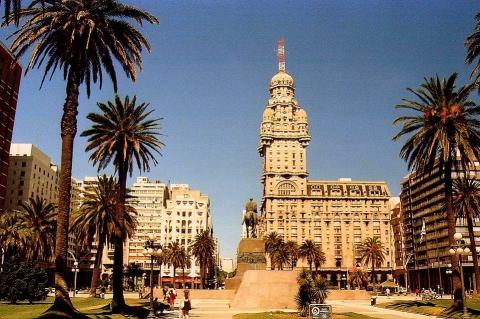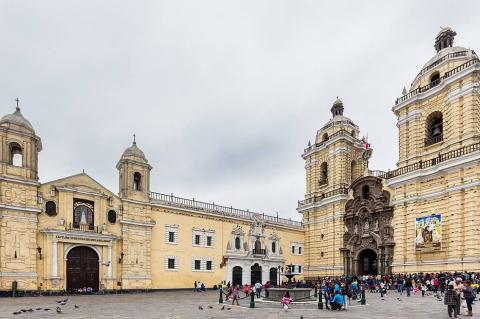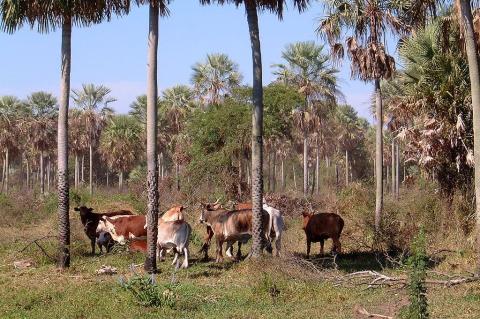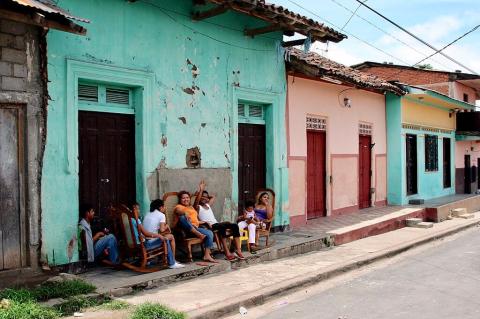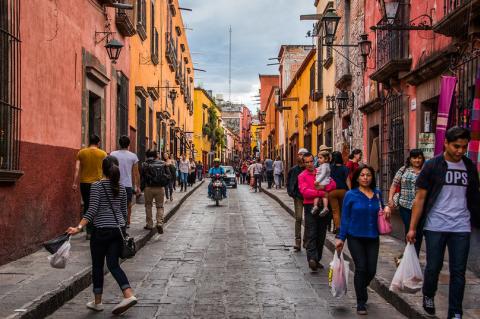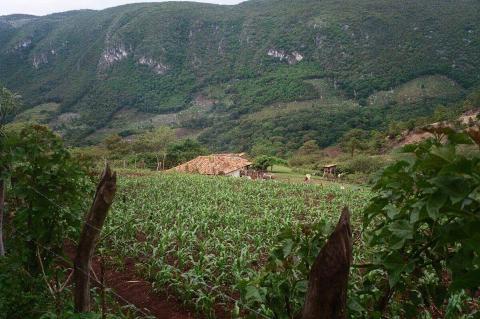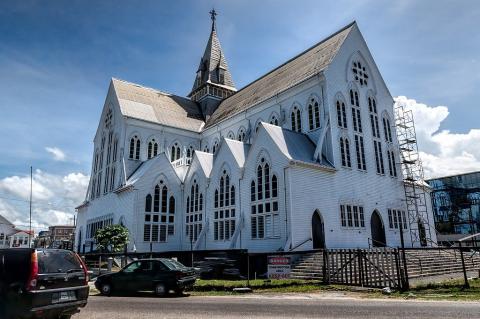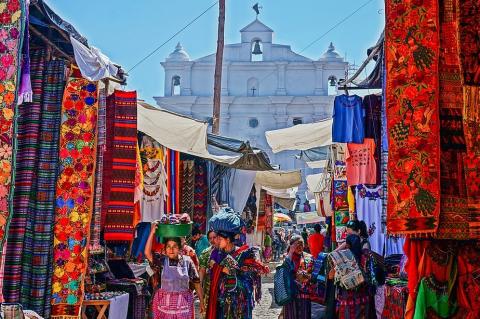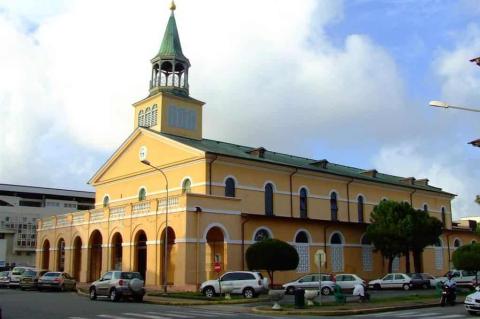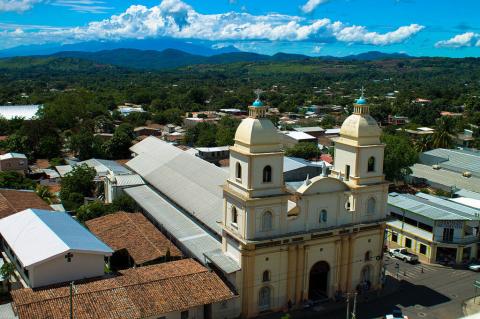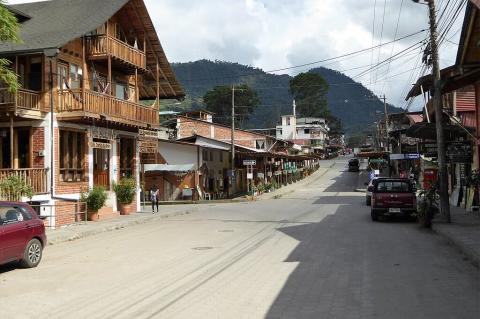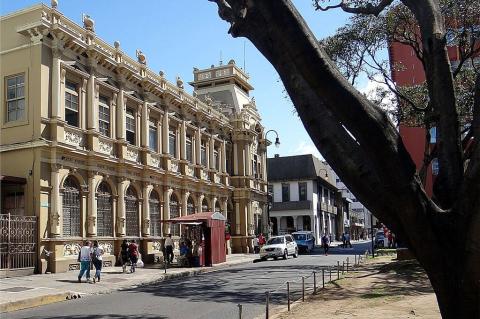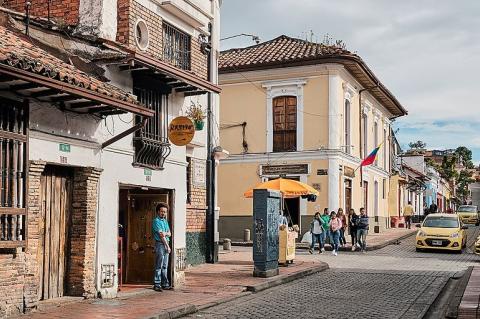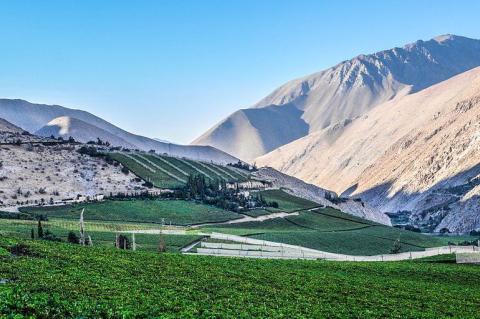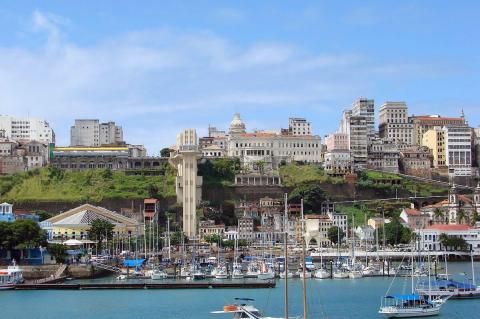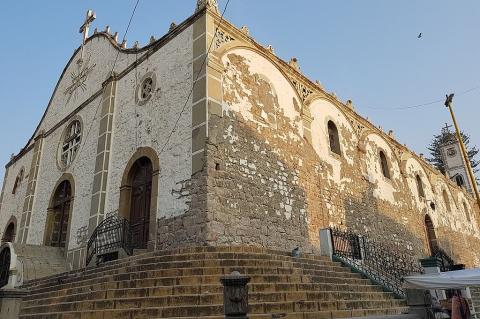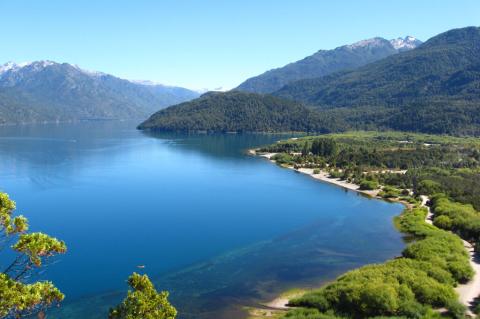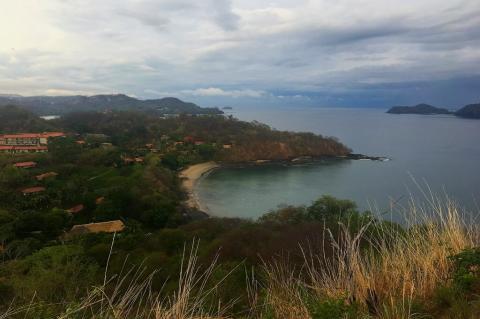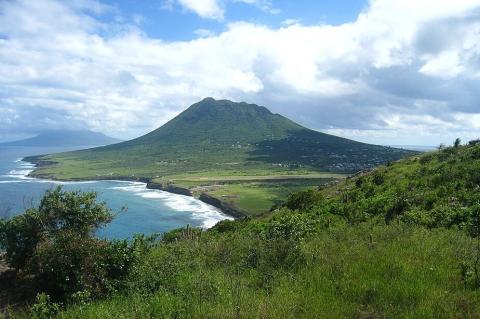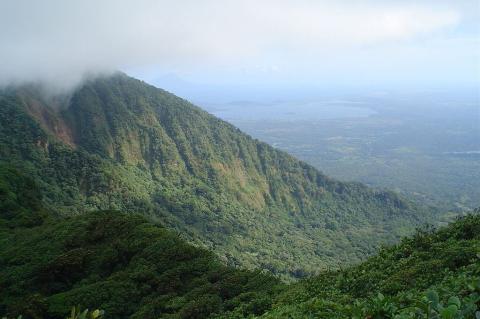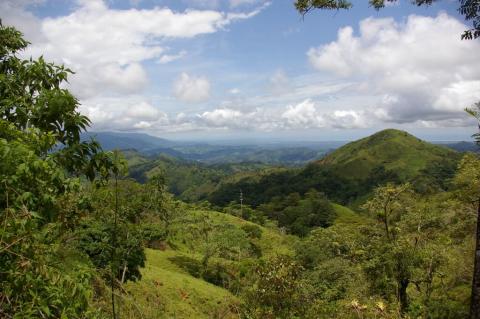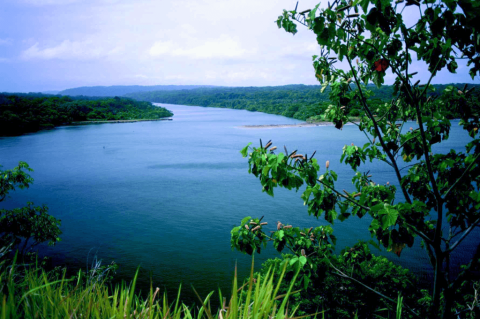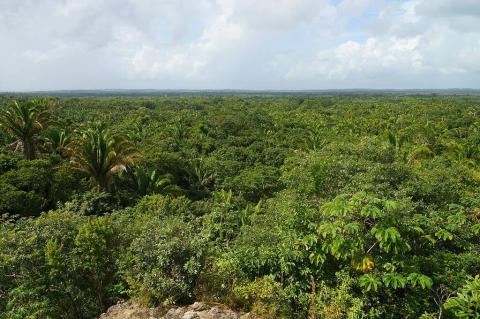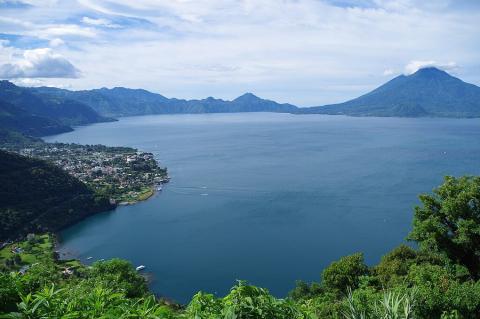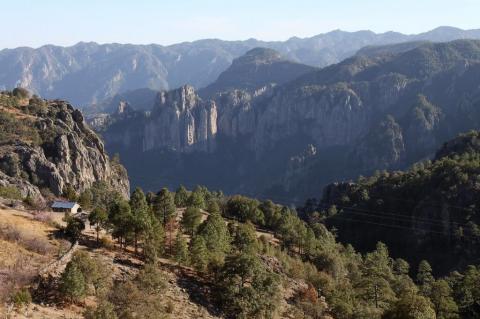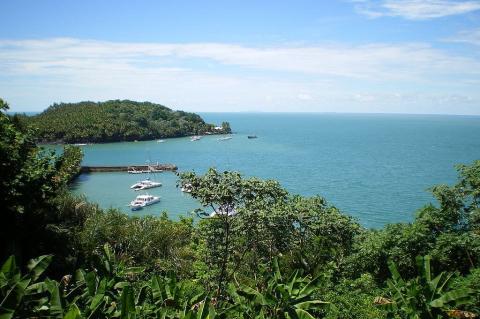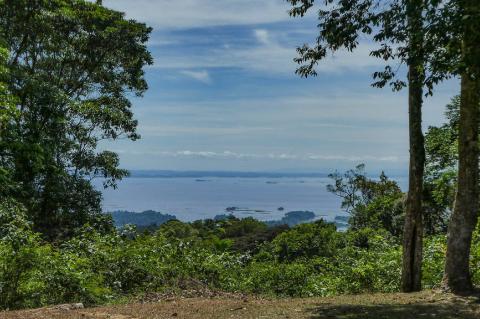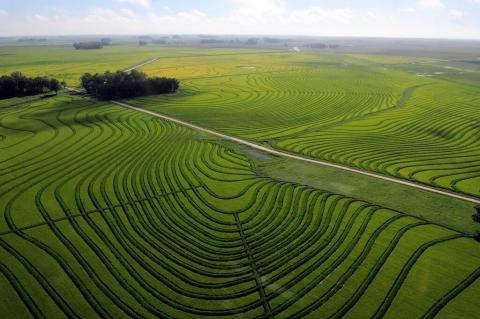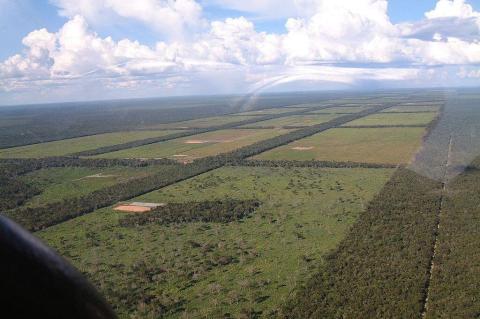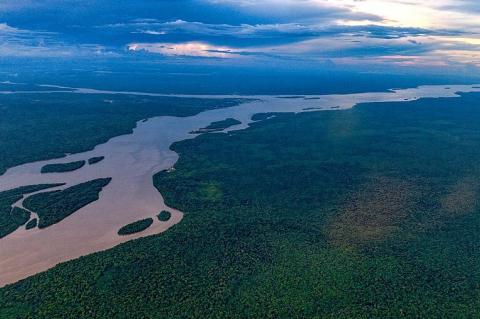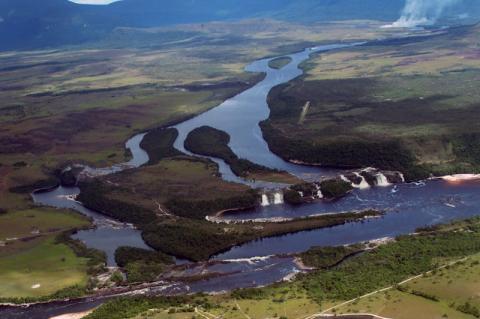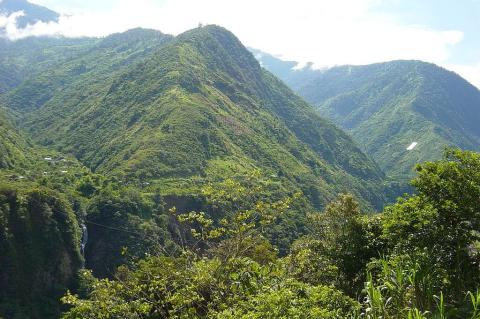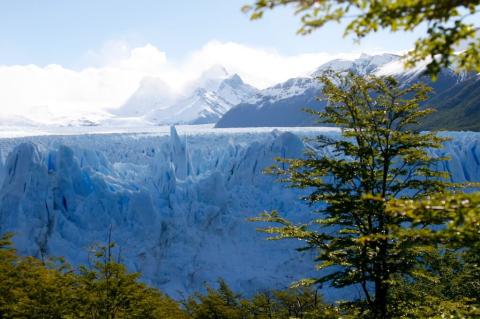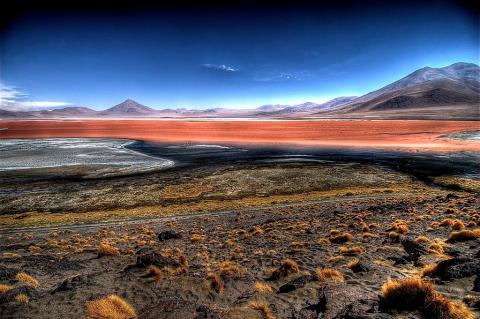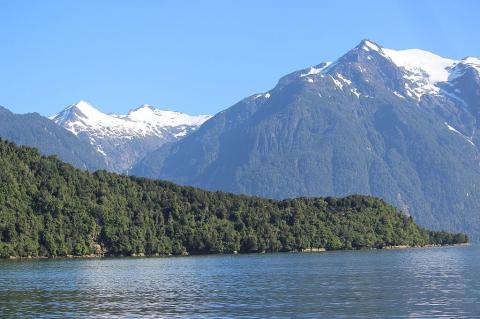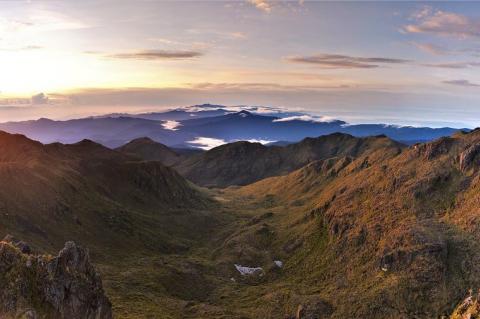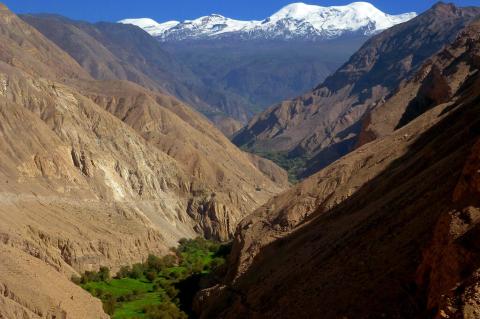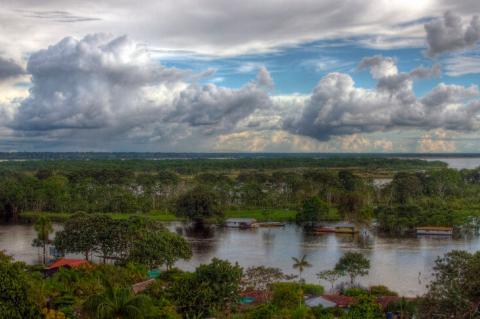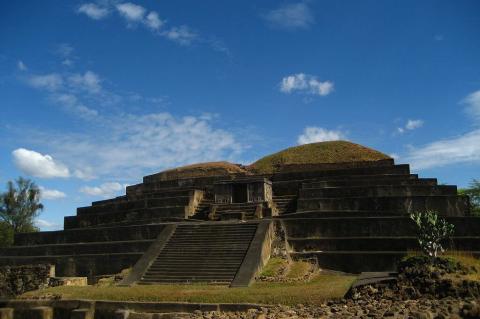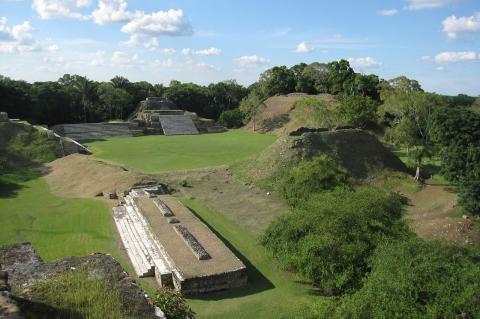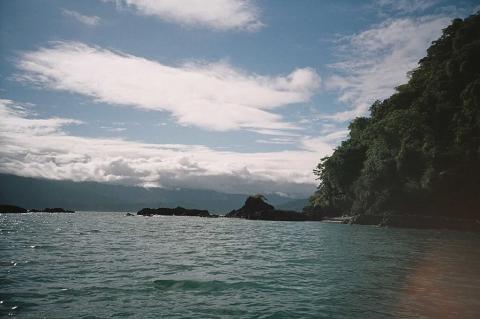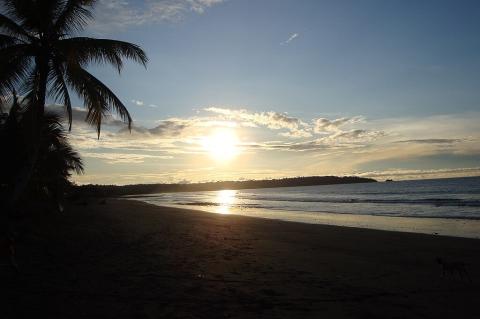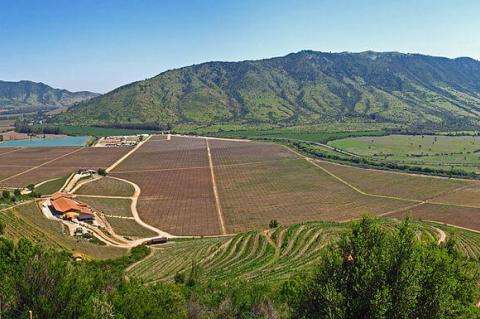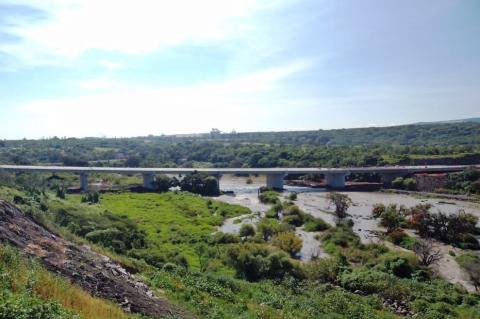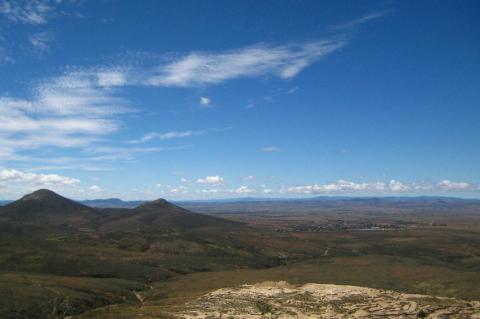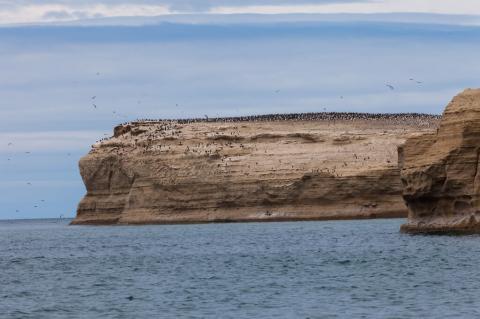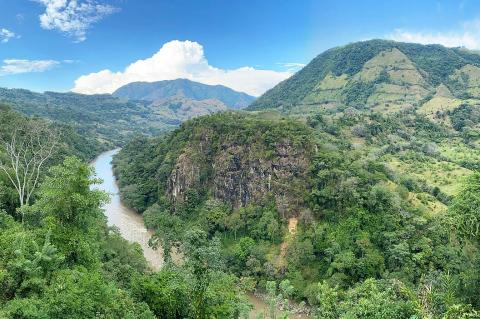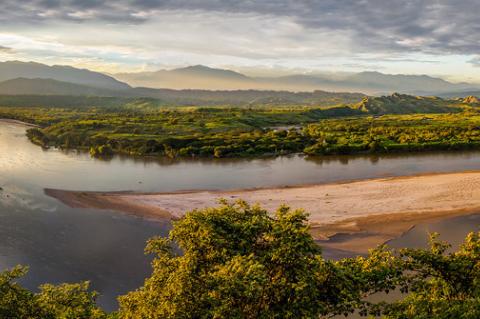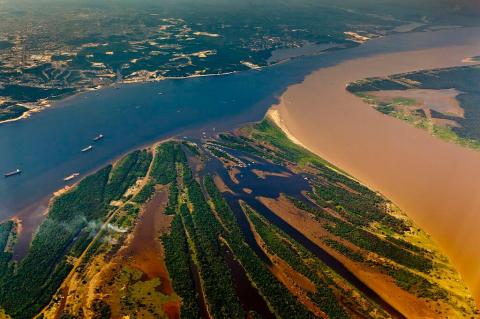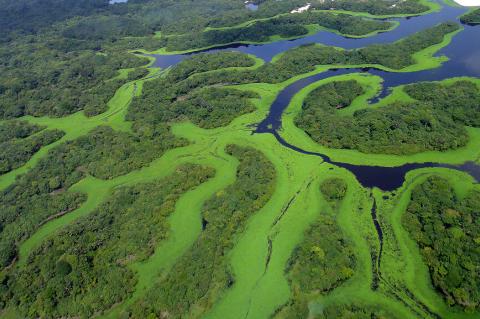Search LAC Geo
The Editor
Latest posts
Featured
Belize: Cultural Landscape
3 weeks ago
By The Editor
Nestled in the heart of Central America, Belize is a cultural melting pot where diverse traditions and influences converge, creating a vibrant and captivating mosaic. From the ancient Maya civilizations to the colonial legacies and waves of immigration, this tiny nation boasts a rich tapestry woven with threads from across the globe.
Argentina: Cultural Landscape
3 weeks ago
By The Editor
Argentina's cultural landscape is a vibrant tapestry woven with threads from indigenous civilizations, colonial influences, and waves of immigration. This intricate fabric reflects a nation where diverse traditions, beliefs, and expressions coexist, creating a unique and captivating cultural identity.
The Altiplano-Puna Plateau and Basin: A High-Altitude Geological Wonderland in South America
1 month ago
By The Editor
The Altiplano-Puna plateau is a vast, high-altitude region in west-central South America, where the Andes Mountains reach their greatest width. It spans Bolivia, Peru, Chile, and Argentina and is often referred to as the "Altiplano." This plateau is the most extensive high plateau outside of the Tibetan Plateau. The Altiplano Basin lies between the Cordillera Occidental and Cordillera Oriental mountain ranges, a vast sedimentary basin that has evolved over geological time.
The Atacama Desert and Ecoregion: Unveiling Arid Histories and Ecological Marvels
4 months ago
By The Editor
The Atacama Desert, one of the driest regions on Earth, stretches across northern Chile and features a varied landscape with significant historical, cultural, and ecological importance. Throughout history, the Atacama Desert has been inhabited by ancient civilizations such as the Chinchorro and Atacameño, who adapted to its challenging conditions. Culturally, the region is abundant with ancient artifacts and sites that showcase the resilience and creativity of its early residents. Despite its extreme aridity, the Atacama Desert Ecoregion surprisingly sustains a diverse range of life, making it a testament to the tenacious spirit of life in harsh environments.
The Peruvian Amazon: Navigating La Selva's Enchanting Biodiversity
4 months ago
By The Editor
The Peruvian Amazon, known locally as "La Selva" (the jungle), unfolds as a vast and awe-inspiring realm stretching from the eastern foothills of the Andes Mountains to the borders shared with Ecuador, Colombia, Brazil, and Bolivia. It constitutes Peru's extensive portion of the Amazon rainforest, the second-largest after Brazil. La Selva holds a special place in the hearts of Peruvians, encompassing one of the country's three principal geographic regions alongside La Costa (the coast) and La Sierra or Los Montañas (the highlands or mountains).
The Llanos: A Mosaic of Vast Grassland Plains and Ecological Diversity
4 months ago
By The Editor
The Llanos, also known as Los Llanos, is a vast tropical grassland plain located east of the Andes Mountains in northwestern South America. It spans Colombia and Venezuela and is characterized by flooded grasslands and savannas, showcasing remarkable ecological diversity. Due to its expansive area and unique biodiversity, the region is of significant environmental and economic importance to the nations it covers.
The Mesoamerican Barrier Reef System: Exploring the Enchanting Underwater Ecosystem
4 months ago
By The Editor
Nestled within the turquoise embrace of the Caribbean Sea lies a natural wonder of unparalleled beauty and ecological significance—the Mesoamerican Barrier Reef System (MBRS), often called the Great Mayan Reef. This marine jewel is the most extensive barrier reef system in the Western Hemisphere, stretching from Isla Contoy at the tip of the Yucatán Peninsula south to Belize, Guatemala, and the Bay Islands of Honduras.
The Patagonian Desert: Navigating the Enchanting Magellanic Steppe
4 months ago
By The Editor
The Patagonian Desert is a captivating region nestled in the southern reaches of Argentina and Chile. This arid landscape has a rich history and diverse geography, spanning vast expanses defined by the Andes Mountains to the west and the Atlantic Ocean to the east. It is home to many resilient flora and fauna and numerous bird species. The desert's unique climatic conditions and remarkable ability to support life in such a harsh environment make it an area of significant ecological and scientific interest.
The Sonoran Desert: A Collage of Arid Wonders
4 months ago
By The Editor
The Sonoran Desert, or Desierto de Altar, is a vast, arid region recognized as Mexico's hottest desert. Extending across northwestern Mexico, including Sonora, Baja California, and Baja California Sur, and reaching into southwestern Arizona and southeastern California in the United States, the Sonoran Desert captivates with its expansive and diverse landscape.
The Atlantic Forest: Exploring its Rich Biodiversity and Conservation Challenges
4 months ago
By The Editor
The Atlantic Forest, known as Mata Atlântica, is a verdant treasure trove of biodiversity stretching along Brazil's eastern and southeastern coast and into Argentina and Paraguay. Although reduced from its original expanse, this sprawling natural region remains one of the most diverse ecosystems on the planet, second only to the Amazon Rainforest. Home to major cities like Rio de Janeiro and Sao Paulo, the Atlantic Forest also provides a habitat for over 148 million people.
The Chihuahuan Desert: Discovering the Rich Landscape of North America's Largest Desert
4 months ago
By The Editor
The Chihuahuan Desert, North America's largest desert ecoregion, is bounded by the Sierra Madre Occidental and the Sierra Madre Oriental; it extends southward into Mexico. Recognized for its biological diversity, the Chihuahuan Desert is a rain shadow desert shaped by the surrounding mountain ranges. Home to unique endemic species, including plants and animals, the region showcases a mosaic of landscapes, from grasslands to shrublands.
The Cerrado: South America's Breathtaking Mosaic of Biodiversity
4 months ago
By The Editor
The Cerrado, South America's largest savanna region and the most extensive ecoregion in the Americas unfolds across central Brazil, extending its natural wonders into northeastern Paraguay and eastern Bolivia. This savanna, boasting unparalleled biological richness, is a global treasure, home to 5% of the planet's animals and plants and harboring an extraordinary menagerie of life.
The Pantanal: Unraveling the Marvels of the World's Largest Tropical Wetland
4 months ago
By The Editor
The Pantanal, the world's largest tropical wetland, unfolds as a colossal seasonal floodplain predominantly situated within Mato Grosso and Mato Grosso do Sul in Brazil's Center-West Region. However, its expansive reach extends into northeastern Paraguay and southeastern Bolivia, creating an ecological masterpiece that captivates with its diverse landscapes and vibrant ecosystems. This remarkable wetland supports a rich array of wildlife and plant species, making it one of the most biodiverse areas on the planet.
The Andean Patagonian Forest: A Haven of Biodiversity and Natural Wonders
4 months ago
By The Editor
Resting amidst the rugged slopes on both flanks of the Andes Mountains in southern South America, the Andean Patagonian Forest, known as Bosque Andino Patagónico, serves as a testament to the remarkable beauty and ecological abundance present in this distinctive temperate woodland. Spanning areas in southern Chile and Argentina, it claims the title of the southernmost forest on our planet.
The Caatinga: South America's Vast Dry Forest Sanctuary
4 months ago
By The Editor
The Caatinga is a vast and unique semiarid biome that covers northeast Brazil and is home to various ecosystems, making it the largest dry forest region in South America. This region is characterized by its arid, thorny, and seasonal vegetation, which provides habitats for more than 2,000 species. Recognized as a biodiversity hotspot, the Caatinga faces significant threats, primarily due to land conversion for agriculture and cattle ranching.
The Yungas: Exploring South America's Subtropical Forest
4 months ago
By The Editor
The Yungas is a remarkable subtropical forest belt along the eastern slope of the Andes Mountains, spanning Peru, Bolivia, and northern Argentina. This unique natural region is a transitional zone, linking the Andean highlands to the lush eastern forests and creating a haven for biodiversity amidst its humid, subtropical climate. The Yungas are characterized by their dense vegetation and diverse ecosystems, which support a wide range of plant and animal species, making it a critical area for conservation.
The Páramo - Andean Moorland: A Unique High-Mountain Ecosystem
4 months ago
By The Editor
The Páramo, or Andean Moorland, is a distinctive high-mountain biome in the Neotropical region, specifically in the upper Andes of Colombia, Ecuador, Peru, and Venezuela. This grassland ecosystem, situated above the timberline but below the permanent snowline, is renowned for its unique flora and fauna, making it an essential component of the region's biodiversity. The diverse plant species and the varied animal life adapted to these high-altitude conditions underscore the Páramo's importance as a hub of endemic biodiversity.
The Puna: Exploring the High-Elevation Grasslands of the Central Andes
4 months ago
By The Editor
The Puna, a cold, high-elevation grassland region nestled within the montane grasslands and shrublands biome, shapes the vast expanse of the Central Andes. According to the World Wildlife Fund (WWF), the Puna stretches from northern Peru through western Bolivia into northern Chile and Argentina. This area is known for its exceptional biodiversity and challenging climates, with unique plant and animal species adapted to its harsh conditions.
The Andes Mountains and the Andean Region: A Comprehensive Exploration
4 months ago
By The Editor
The Andes Mountains, also known as Cordillera de Los Andes, are renowned as the world's lengthiest continental mountain range, extending in a grand trajectory along the western coast of the South American continent. This extraordinary geographical feature not only delineates a slender western coastal area from the remaining expanse of the continent but also claims the distinction of being the tallest mountain range globally outside of Asia.
Belize Barrier Reef: A Jewel of Ecological Diversity and Conservation
4 months ago
By The Editor
The Belize Barrier Reef, a masterpiece of nature within the Mesoamerican Barrier Reef System, is a cornerstone of the Northern Hemisphere's marine biodiversity. As the second-largest coral reef system globally, it mesmerizes with its intricate ecosystems, rare coastal forests, and unique reef types. Influenced by the rise and fall of sea levels, natural karst topography, and crystal-clear waters, the reef boasts many kinds of reefs and atolls and distinctive features like the renowned Blue Hole and Rocky Point.
Tumbes-Chocó-Magdalena Hotspot: A Biodiversity Haven in Peril
4 months ago
By The Editor
The Tumbes-Chocó-Magdalena Hotspot, spanning from Panama to Peru, is a biodiverse region threatened by urbanization, hunting, and deforestation. Positioned along the western flank of the Andes Mountains, this hotspot encompasses various ecosystems, hosting an extraordinary range of flora and fauna. With unique ecosystems and species, urgent conservation efforts are needed to protect this hotspot from further decline and preserve its exceptional biodiversity.
Maya Forest and Marine Corridors: Intricately Linked Landscapes
4 months ago
By The Editor
The Maya Forest Corridor and the Maya Mountain Marine Corridor form interconnected landscapes, both crucial in sustaining ecological equilibrium. The forest corridor is a vital wildlife habitat, supporting species that depend on terrestrial and marine environments. At the same time, the marine corridors protect water quality in rivers originating from the Maya Mountains, a pivotal element for the forest ecosystem.
The Southern Cone: Harmony and Diversity in South America
4 months ago
By The Editor
Occupying the southernmost reaches of the South American continent, encompassing Argentina, Chile, and Uruguay, with the Pacific Ocean to the west and the Atlantic Ocean to the east, the Southern Cone unravels as a rich mosaic of history, diverse landscapes and thriving economies. Beyond its recognized nations, this subregion extends its influence to Brazil's southern states and Paraguay, reflecting shared histories and geographical connections.
Caribbean Islands Biodiversity Hotspot: A Region of Remarkable Ecological Richness and Diversity
4 months ago
By The Editor
The Caribbean Islands biodiversity hotspot, encompassing 35 countries and territories, is renowned as a global ecological treasure trove. Spanning the Caribbean Sea, it is characterized by a mosaic of islands, cays, and islets, each harboring an astonishing array of unique species. This hotspot is celebrated for its scenic beauty, pristine beaches, and exceptional biological diversity, making it one of the most important biodiversity hotspots on the planet.
The Pampas: South America's Verdant Canvas
4 months ago
By The Editor
The Pampas, a vast and fertile lowland plain region in South America, unfolds like a natural canvas from the Atlantic Ocean to the Andes Mountains. Encompassing the Argentine provinces of Buenos Aires, La Pampa, Santa Fe, Entre Ríos, and Córdoba, along with all of Uruguay and Brazil's southernmost state, Rio Grande do Sul, it is a region of ecological diversity and cultural significance.
The Gran Chaco: A Blend of Biodiversity and Challenges
5 months ago
By The Editor
The Gran Chaco, or simply Chaco, is a vast and intriguing expanse that stretches across eastern Bolivia, western Paraguay, northern Argentina, and parts of the Brazilian states of Mato Grosso and Mato Grosso do Sul, seamlessly connected with the Pantanal region. Located in the rain shadow of the Central Andes, it is primarily an alluvial sedimentary plain, home to South America's second-largest forest after the Amazon rainforest. However, it is also one of the most deforested areas in the world.
Amazônia: Guardian of Biodiversity and Lifeline of the Earth
5 months ago
By The Editor
Amazônia, or "The Amazon," is a vast and awe-inspiring region of South America. Often called the "lungs of the Earth," this immense lush green forest, stretching across nine countries, is home to unparalleled plant and animal life, making it one of the Earth's most biodiverse ecosystems. Comprising the Amazon rainforest, the Amazon biome, the Amazon basin, and the Amazon River, Amazônia plays a crucial role in regulating the planet's climate and producing oxygen.
The Latin American Region: A Mosaic of Geography, Biodiversity, Climate, and Culture
6 months ago
By The Editor
Latin America, often described as a rainbow of diversity, is a mesmerizing region that stretches from the southern border of the United States to the southernmost tip of South America. This expansive territory encompasses an astonishing array of countries, cultures, and ecosystems, including the enchanting islands of the Caribbean Archipelago, the captivating landscapes of the Central American Isthmus, the multifaceted expanse of Mexico, and the diverse wonders of the South American Continent.
The South American Continent: A Mosaic of Natural Splendor and Cultural Diversity
6 months ago
By The Editor
Nestled between the shimmering waters of the Atlantic Ocean to the east and the Pacific Ocean to the west, South America emerges as a continent of unparalleled beauty and cultural richness. It stretches from the steamy jungles of the Amazon Basin in the north to the icy reaches of Patagonia in the south, creating a rich diversity of natural and cultural landscapes that have captivated explorers, scientists, and travelers for centuries.
The Caribbean Archipelago: A Dynamic Mosaic of Natural Beauty and Cultural Richness
6 months ago
By The Editor
The Caribbean Archipelago comprises thousands of islands in the Caribbean Sea. It combines natural beauty and cultural diversity, where human history and geological evolution intertwine. The region's geography, weather, plant and animal life, history, and culture offer a captivating microcosm of human existence and ecological diversity.
The Central American Isthmus: A Rich Medley of Natural and Cultural Landscapes
6 months ago
By The Editor
Central America is a crucial strip of land that connects the two continents of North and South America. It is located between the Pacific Ocean and the Caribbean Sea, stretching from southeastern Mexico to northwestern Colombia. This region boasts a diverse mix of natural and cultural landscapes, and due to its location, it plays a pivotal role in shaping the geological, climatic, ecological, and cultural dynamics that define the Americas.
Central Atlantic Forest Ecological Corridor: Preserving Brazil's Biodiversity Marvel
6 months ago
By The Editor
The Central Atlantic Forest Ecological Corridor is a remarkable and critically important conservation initiative in Brazil that aims to strategically connect and safeguard fragmented patches within the Atlantic Forest biome. This visionary ecological corridor is a lifeline, pivotal in preserving some of the planet's most imperiled and diverse ecosystems.
SINAC, Costa Rica's National System of Conservation Areas: A Model of Conservation and Biodiversity
6 months ago
By The Editor
SINAC, Costa Rica's National System of Conservation Areas, is a model for conservation efforts worldwide. With over 26 national parks and numerous other protected areas, Costa Rica has dedicated over a quarter of its landmass to conservation. This commitment to protecting its natural resources has made Costa Rica one of the most biodiverse countries on Earth.
Central Amazon Ecological Corridor: Nurturing Biodiversity and Sustainability
6 months ago
By The Editor
The Central Amazon Ecological Corridor is a crucial protected expanse in Brazil, embracing a variety of ecosystems, habitats, and species within the Amazon Rainforest. Spanning the core of the Amazon Basin, this corridor serves a pivotal function in safeguarding biodiversity, addressing climate change, and fostering sustainable development in the area.
Mesoamerican Biological Corridor: A Beacon of Biodiversity Conservation in Central America
6 months ago
By The Editor
The Mesoamerican Biological Corridor is a remarkable conservation initiative in Central America that stands as a beacon of biodiversity preservation. Stretching from Mexico to Panama, this corridor encompasses a mosaic of ecosystems and is a critical link between protected areas.
Chile's National Park System: A Testament to Environmental Stewardship
7 months ago
By The Editor
Chile's extensive and well-managed national park system reflects its unwavering commitment to preserving its remarkable natural heritage. Administered by the National Forest Corporation (CONAF), this system, highlighted by the iconic Route of Parks of Patagonia, provides a sanctuary for diverse ecosystems and abundant biodiversity.
Water Bodies of the Caribbean Region
7 months ago
By The Editor
The Caribbean region, a mosaic of island nations and coastal territories, is renowned for its expansive network of water bodies, encompassing various gulfs, straits, bays, rivers, and lakes. These aquatic realms are defining features of the Caribbean's physical landscape and integral components of its ecological balance, climatic patterns, and economic vitality. Spanning across the crystalline waters of the Caribbean Sea, these water bodies serve as vital conduits for life in the region.
Mountain Ranges of the Caribbean Region
8 months ago
By The Editor
The Caribbean landscape is a mosaic of peaks and plateaus sculpted by volcanic activity and erosion. Mountain ranges, with tall volcanic peaks on some islands, form the backbone of the archipelago. These dramatic highlands gradually transition into rolling hills and fertile valleys carpeted with lush rainforests, cultivated fields, and the sea.
Water Bodies of Uruguay
9 months ago
By The Editor
Despite being smaller than its neighboring countries, Uruguay has important bodies of water that significantly shape its geography, economy, and cultural identity. The Río de la Plata and the Atlantic coastline are essential gateways to the sea, serving as vital connections for trade, commerce, and tourism. These coastal regions are home to Uruguay's pristine beaches and vibrant seaside towns, significantly contributing to its tourism industry and cultural allure.
Islands and Archipelagos of Ecuador
9 months ago
By The Editor
Ecuador, renowned for its rich biodiversity and vibrant cultural heritage, boasts a remarkable collection of islands and archipelagos that dot its coastal waters. From the azure depths of the Pacific Ocean to the pristine shores of the Galápagos Islands, each island in Ecuador offers a unique mosaic of ecosystems, cultures, and experiences, reflecting the country's diverse natural wonders and cultural significance.
Islands and Archipelagos of Peru
9 months ago
By The Editor
Peru has islands and archipelagos along its Pacific coastline and lakes, which are not as well-known as other island destinations. However, they are hidden gems that showcase the country's remarkable biodiversity and cultural heritage. These islands and archipelagos contribute significantly to Peru's rich landscapes, wildlife, and cultural diversity.
Islands and Archipelagos of Mexico
9 months ago
By The Editor
Mexico, a land of rich cultural heritage and breathtaking landscapes, extends its allure beyond its mainland borders to encompass a stunning array of islands and archipelagos scattered across its coastal waters. Nestled within the embrace of the Pacific Ocean and the Gulf of Mexico, these picturesque landmasses are evidence of the nation's diverse geography and vibrant heritage.
Mountain Ranges of Mexico
9 months ago
By The Editor
Mexico is one of the largest countries in the Americas and one of the most diverse in terms of geography, with a wide range of landscapes, including mountains, deserts, jungles, and coastal regions. Mexico's varied and complex topography features numerous mountain ranges and highlands that span its landscape.
Islands and Archipelagos of Colombia
9 months ago
By The Editor
Colombia, known for its vibrant culture and diverse landscapes, extends its charm beyond its mainland borders into the azure waters of the Caribbean Sea and the Pacific Ocean. Nestled within these pristine waters lies many captivating islands and archipelagos, each offering its unique blend of natural beauty, cultural heritage, and ecological wonders.
Islands and Archipelagos of Venezuela
9 months ago
By The Editor
Venezuela has stunning islands in the Caribbean Sea and the Gulf of Venezuela. Los Roques Archipelago, a national park with over 300 islands, is perfect for diving and snorkeling. Margarita Island is known for its palm-fringed beaches and cultural significance. These islands are important habitats for endangered fauna, including sea turtles. Venezuela's islands provide opportunities for relaxation amidst breathtaking landscapes and vibrant communities.
Islands and Archipelagos of Costa Rica
9 months ago
By The Editor
Costa Rica, renowned for its stunning biodiversity and commitment to conservation, boasts a treasure trove of islands and archipelagos scattered along its Pacific and Caribbean shores. These maritime jewels offer diverse experiences, ranging from biodiverse conservation areas teeming with wildlife to opportunities for cultural immersion and exhilarating outdoor activities.
Islands and Archipelagos of Nicaragua
9 months ago
By The Editor
Nicaragua, nestled in the heart of Central America, boasts a mosaic of islands and archipelagos strewn across its Caribbean and Pacific shores, each a gem in the country's rich geographical crown. With a coastline stretching hundreds of miles, Nicaragua hosts a diverse array of islands, each with distinct character and allure.
Islands and Archipelagos of Brazil
9 months ago
By The Editor
Brazil, the largest country in South America, is renowned for its awe-inspiring natural landscapes, dynamic culture, and unparalleled biodiversity. While the Amazon rainforest and extensive coastline often steal the spotlight, Brazil's lesser-known islands and archipelagos add enchantment to its allure and diversity. These islands capture Brazil's maritime heritage and natural splendor, from secluded tropical paradises to historically rich colonial settlements.
Islands and Archipelagos of Argentina
9 months ago
By The Editor
With its expansive coastline along the Atlantic Ocean, Argentina may not be immediately associated with islands in the same vein as some other nations. However, several remarkable islands and archipelagos are nestled within its maritime expanse, commanding attention and appreciation. Stretching across the South Atlantic, Argentina's islands and archipelagos are diverse and dynamic, offering a glimpse into the country's rich geography and cultural heritage.
Islands and Archipelagos of Honduras
9 months ago
By The Editor
Nestled within the cerulean waters of the Gulf of Honduras and the Caribbean Sea, Honduras reveals a coastal paradise adorned with many islands and archipelagos, each boasting distinctive charm and allure. From the Bay Islands' rugged shores to the Caribbean's tranquil cays, Honduras beckons adventurers and seekers of natural beauty to embark on an unforgettable journey through its island treasures.
Islands and Archipelagos of Panama
9 months ago
By The Editor
Panama's islands on both coasts offer a mix of culture and nature. The San Blas Islands display traditional island life with turquoise waters and sandy beaches. Bocas del Toro Archipelago offers a laid-back Caribbean atmosphere, lush rainforests, and diving spots. Panama invites visitors to indulge in beach tourism, underwater adventures, and eco-tourism, with a rich variety of landscapes and cultures to discover.
Water Bodies of Suriname
9 months ago
By The Editor
Suriname's diverse water bodies, from mangroves to coastal lagoons, support rich biodiversity and facilitate trade. Despite its short coastline, the country's estuaries and wetlands are home to unique ecosystems. Each water body is crucial to Suriname's identity and development, highlighting the relationship between nature and human activity.
Mountain Ranges of Central America
9 months ago
By The Editor
Central America is a region blessed with a remarkable diversity of mountain ranges that span its seven countries. These mountainous landscapes contribute to the region's captivating scenery, rich ecological heritage, and cultural significance. The mountains and highland areas provide essential habitats for various plant and animal species and offer opportunities for eco-tourism and outdoor activities.
Mountain Ranges and Major Peaks of Venezuela
9 months ago
By The Editor
Venezuela has diverse mountain ranges that offer stunning landscapes and ecological significance. These mountain ranges in Venezuela contribute to the country's breathtaking natural beauty, rich biodiversity, and cultural heritage. They provide opportunities for adventure, exploration, and appreciation of the diverse landscapes that make Venezuela a captivating destination.
Mountain Ranges and Major Peaks of Bolivia
9 months ago
By The Editor
Bolivia has a diverse and extensive array of mountain ranges, shaped predominantly by the Andes Mountains, which run through its western region. These mountain ranges in Bolivia contribute to the country's diverse and captivating natural beauty, making it a paradise for adventurers, nature enthusiasts, and those seeking to explore the wonders of the Andes.
Mountain Ranges and Major Peaks of Ecuador
9 months ago
By The Editor
Ecuador is characterized by its stunning and diverse mountainous regions, which play a central role in shaping its unique geography, climate, and culture. The country's mountainous areas are primarily centered around the Andes, which runs from north to south through the heart of Ecuador. However, other mountainous regions add to the country's rich natural beauty and biodiversity.
Mountain Ranges and Major Peaks of Peru
9 months ago
By The Editor
Peru hosts a diverse and awe-inspiring array of mountain ranges that form part of the more extensive Andes mountain range. These ranges stretch from north to south, shaping the country's topography and providing a home to unique ecosystems and cultural heritage. The Andes Mountains, which run through the country, contain many of Peru's highest peaks.
Mountain Ranges and Major Peaks of Chile
9 months ago
By The Editor
Chile is known for its diverse mountainous landscapes, a prominent feature of its geography. The mountain ranges of Chile offer a wide range of ecosystems, geological formations, and cultural significance. They contribute to the country's stunning landscapes, unique ecology, and cultural heritage.
Mountain Ranges and Major Peaks of Argentina
9 months ago
By The Editor
Argentina is a vast country with a diverse geography, home to several mountain ranges across different regions. From the towering peaks of the Andes Mountains to the picturesque hills of the Sierra de la Ventana, Argentina's mountains provide a diverse range of experiences for travelers and outdoor enthusiasts.
Mountain Ranges of Brazil
9 months ago
By The Editor
Brazil is a vast country with diverse geography, but it is primarily known for its extensive lowland areas and the Amazon Rainforest. Brazil's mountains are predominantly found in the southeastern and southern regions of the country. These ranges include cliffs, dense rainforests, and high-altitude plateaus.
Islands and Archipelagos of Chile
9 months ago
By The Editor
Situated along the rugged Pacific coast of South America, Chile stands as a land of remarkable contrasts and natural wonders. Beyond its towering Andean peaks and arid deserts, Chile is also home to many islands and archipelagos that dot its expansive coastline. These islands, ranging from remote outposts to bustling cultural hubs, form a diverse and captivating collection of landforms, each with unique characteristics and significance.
Water Bodies of Venezuela
9 months ago
By The Editor
Venezuela's aquatic landscape is shaped by the Orinoco River, one of South America's most extensive waterways, flowing through rainforests and fertile plains. Lake Maracaibo, the continent's largest lake, sustains diverse ecosystems. These water bodies sustain life in Venezuela, facilitating transportation and agriculture. They provide habitats for aquatic species and are vital for indigenous communities' sustenance, cultural practices, and spiritual connection.
Water Bodies of Peru
9 months ago
By The Editor
Peru, a land of striking geographical diversity and storied cultural heritage, is adorned with an impressive tapestry of water bodies that sculpt its terrain and imbue its inhabitants' lives with vitality. Beyond ecological significance, its water bodies are repositories of cultural heritage and the source of spiritual reverence and artistic inspiration. Water is central to Peruvian culture, connecting communities through traditional fishing practices, ceremonial offerings, and coastal festivals.
Water Bodies of Paraguay
9 months ago
By The Editor
Paraguay is a South American country without direct access to the sea. However, it has many diverse bodies of water that significantly impact its geography, ecology, and culture. The Paraguay River runs from north to south and is the country's most important waterway. Although Paraguay does not have access to the open seas, its bodies of water are vital resources that enrich the nation's environment, support its economy, and contribute to the well-being of its people.
Water Bodies of Panama
9 months ago
By The Editor
Panama's water bodies, from its extensive coastlines to the iconic Panama Canal and intricate river systems, are central to its geography, ecology, and economy. They sustain rich ecosystems, support vital industries like fishing and transportation, and draw tourists to its shores. However, these waterways face threats like pollution and overexploitation, emphasizing the need for sustainable management.
Water Bodies of Nicaragua
9 months ago
By The Editor
Nicaragua's breathtaking landscape is shaped by a variety of water bodies including vast lakes, winding rivers, and peaceful lagoons such as Lake Nicaragua, Lake Managua, San Juan River, Coco River, Apoyo Lagoon, and Asososca Lagoon. These water bodies provide essential resources for fishing, agriculture, transportation, and recreation, enhancing the environment and the lives of Nicaraguans.
Water Bodies of Mexico
9 months ago
By The Editor
Mexico is a country that boasts a vast number of bodies of water, including oceans, seas, lakes, rivers, and lagoons that offer various aquatic environments. Apart from its coastal regions, Mexico is also home to numerous inland bodies of water. Overall, Mexico's bodies of water are crucial in sustaining ecosystems, supporting livelihoods, and offering recreational opportunities for locals and visitors.
Water Bodies of Honduras
10 months ago
By The Editor
Honduras has diverse water bodies that add to its natural beauty, biodiversity, and economy. The northern coast is on the Caribbean Sea, and the Gulf of Honduras acts as a vital transportation route. Honduras also has picturesque bays and lagoons, prominent rivers, and Lake Yojoa—the largest natural lake in the country. These water bodies contribute to the country's ecological balance and natural beauty and support various economic activities like fishing, agriculture, and tourism.
Water Bodies of Guyana
10 months ago
By The Editor
From large rivers and extensive estuaries to coastal lagoons and offshore zones, Guyana's bodies of water provide a wealth of natural resources, support a wide array of wildlife, and offer numerous opportunities for recreation and livelihoods.
Water Bodies of Guatemala
10 months ago
By The Editor
Guatemala is known for its diverse and beautiful bodies of water, which play crucial roles in its natural environment, economy, and culture. From stunning lakes nestled between volcanoes to rivers that traverse lush forests and carve canyons, Guatemala's water bodies offer many experiences and opportunities for locals and tourists.
Water Bodies of French Guiana
10 months ago
By The Editor
French Guiana, situated on the northeastern coast of South America, has diverse bodies of water contributing to its unique ecological and cultural landscape. From meandering rivers like the Maroni and Oyapock, which form natural borders with neighboring countries, to serene lakes such as Laussat and Vieux Saramea, nestled within lush rainforests, the region is rich in aquatic diversity.
Water Bodies of El Salvador
10 months ago
By The Editor
El Salvador, bordered by the Pacific Ocean, is home to diverse water bodies contributing to its natural beauty and ecological significance. From expansive lakes and picturesque lagoons to bays, gulfs, and meandering rivers, these bodies of water shape the landscape and play essential roles in the country's ecosystem, economy, and recreational activities.
Water Bodies of Ecuador
10 months ago
By The Editor
Ecuador is a country in South America home to various water bodies. The Pacific Ocean borders the country to the west. The Amazon River runs through Ecuador, and the country hosts many other rivers, lakes, lagoons, and reservoirs that are essential to the country's natural and cultural heritage. The water bodies of Ecuador are an integral part of the country's natural and cultural heritage.
Water Bodies of Colombia
10 months ago
By The Editor
Colombia is located in South America and is known for its diverse geography, encompassing the Andes Mountains, the Caribbean Sea, the Pacific Ocean, and the Amazon rainforest in the south. Colombia boasts various water bodies, including rivers, lakes, lagoons, gulfs, bays, and coastal areas, that play a crucial role in the country's ecosystems. These water bodies provide habitats for many plant and animal species and are natural treasures essential to Colombia's cultural heritage and economic development.
Mountain Ranges and Major Peaks of Colombia
10 months ago
By The Editor
The mountain ranges of Colombia contribute to the country's diverse landscapes and ecological importance and offer outdoor activities, research, and exploration opportunities. They showcase the remarkable geographical features and natural beauty that make Colombia a unique and fascinating country to study.
Water Bodies of Brazil
10 months ago
By The Editor
Brazil, the largest country in South America, is blessed with a wide variety of water bodies that span its vast and diverse landscape. The country offers a remarkable range of aquatic environments, from mighty rivers and expansive wetlands to breathtaking waterfalls and stunning coastal areas.
Water Bodies of Bolivia
10 months ago
By The Editor
Bolivia is a landlocked country in South America, which means it lacks direct access to the ocean. However, it is home to several notable water bodies that play a vital role in the country's geography, ecology, and cultural heritage. While Bolivia's water bodies may not have coastal landscapes, they still play a crucial role in the country's geography, ecology, and cultural heritage.
Water Bodies of Chile
10 months ago
By The Editor
Chile is home to various water bodies, ranging from expansive rivers and lakes to stunning gulfs, bays, and fjords. Its extensive coastline stretches along the Pacific Ocean, offering dramatic cliffs, beautiful beaches, and vibrant marine life. The major rivers provide water resources and support ecosystems. Notable lakes like General Carrera, Llanquihue, and Panguipulli offer scenic beauty and recreational opportunities.
Cayes, Reefs, and Atolls of Belize
10 months ago
By The Editor
Nestled along the sparkling Caribbean Sea, Belize, a small yet remarkable country in Central America, boasts a coastline adorned with a treasure trove of cayes, reefs, and atolls that collectively form the renowned Belize Barrier Reef System. Stretching along the country's coastal expanse, these cayes are miniature paradises characterized by their pristine beaches, azure waters, and vibrant marine life.
Water Bodies of Belize
10 months ago
By The Editor
Belize's water resources, including lakes, lagoons, and approximately 35 major rivers, notably the Belize River, are vital for drinking, agriculture, and hydroelectric power generation. Whether providing sustenance or offering leisure opportunities, Belize's diverse water resources serve as integral components of daily life and leisure, enriching the experiences of both locals and visitors alike.
The Caribbean: Cultural Landscape
11 months ago
By The Editor
The Caribbean region boasts a rich and diverse cultural landscape shaped by indigenous, African, European, and Asian influences. It encompasses numerous countries and territories, each with unique cultural expressions and historical narratives.
Venezuela: Cultural Landscape
11 months ago
By The Editor
Venezuela has a rich and diverse cultural landscape that reflects a blend of indigenous, Spanish, African, and Caribbean influences. The country's cultural expressions are shaped by its history, resulting in a fascinating and complex mix of traditions that continue to evolve today. From the colorful art and music to the delicious cuisine and festive celebrations, every aspect of Venezuela's culture embodies a unique identity deeply rooted in its heritage.
Uruguay: Cultural Landscape
11 months ago
By The Editor
Uruguay, a small South American country between Brazil and Argentina, has a rich and diverse cultural landscape. Its culture blends indigenous roots, European influences, rural traditions, vibrant festivals, intellectualism, and a love for sports and the arts.
Suriname: Cultural Landscape
11 months ago
By The Editor
Suriname's cultural landscape is a captivating blend of indigenous heritage, colonial influences, African traditions, and immigrant communities. This diversity, expressed through art, music, cuisine, festivals, and daily life, creates a unique and dynamic cultural experience for residents and visitors alike.
Peru: Cultural Landscape
11 months ago
By The Editor
Peru is a country with a rich cultural heritage that has been shaped over thousands of years. Its cultural landscape combines the legacies of its ancient civilizations, the influences of its colonial past, the enduring traditions of its indigenous communities, the vibrant expressions of its contemporary art scene, and the unparalleled excellence of its culinary offerings.
Paraguay: Cultural Landscape
11 months ago
By The Editor
Paraguay has a rich and diverse cultural landscape shaped by its indigenous heritage, colonial history, and the fusion of various ethnic influences. Blending indigenous, colonial, and contemporary influences has shaped a unique cultural identity.
Panama: Cultural Landscape
11 months ago
By The Editor
Panama's cultural landscape is a mosaic of indigenous heritage, African influences, colonial history, and contemporary expressions. The country embraces diversity, promoting cultural preservation and celebration as an integral part of its national identity.
Nicaragua: Cultural Landscape
11 months ago
By The Editor
Nicaragua, located in Central America, possesses a vibrant and diverse cultural landscape shaped by its indigenous roots, Spanish colonial heritage, and contemporary influences. The country's cultural heritage is deeply rooted in its diverse communities.
Mexico: Cultural Landscape
11 months ago
By The Editor
Mexico boasts a cultural richness that stems from its deep indigenous roots, the interweaving of Spanish colonial legacies, and the diverse influences from around the globe. This extraordinary amalgamation gives rise to a vivid array of traditions, arts, music, cuisine, and celebrations, forming a cultural narrative that is both dynamic and profound.
Honduras: Cultural Landscape
11 months ago
By The Editor
Honduras boasts a rich and diverse cultural landscape shaped by its indigenous roots, colonial history, African heritage, and contemporary expressions. The country's cultural heritage is a fascinating blend of various traditions, customs, and beliefs that have evolved over centuries. The ancient traditions and customs of the indigenous people, such as the Maya and Lenca, have been preserved and passed down through generations.
Guyana: Cultural Landscape
11 months ago
By The Editor
Guyana, located on the northern coast of South America, boasts a rich and diverse cultural landscape shaped by its history, ethnic makeup, and geographical characteristics. The country is known for its fusion of indigenous, African, Indian, European, and Chinese cultures.
Guatemala: Cultural Landscape
11 months ago
By The Editor
The cultural landscape of Guatemala is a fusion of ancient traditions, colonial influences, and contemporary expressions. It showcases the country's rich indigenous heritage, artistic craftsmanship, vibrant music and dance, flavorful cuisine, and a deep connection to its natural and historical surroundings.
French Guiana: Cultural Landscape
11 months ago
By The Editor
French Guiana's cultural landscape is a fascinating blend of indigenous, African, European, and Asian influences, shaped by its historical legacy and multicultural population. This unique combination contributes to the region's vibrant traditions, languages, music, cuisine, and cultural richness.
El Salvador: Cultural Landscape
11 months ago
By The Editor
The cultural landscape of El Salvador is a vibrant fusion of indigenous, European, and contemporary influences. The country's history is marked by the ancient Mayan civilization, Spanish colonization, and subsequent waves of immigration. This blend of cultures has shaped El Salvador's traditions, customs, language, cuisine, and arts.
Ecuador: Cultural Landscape
11 months ago
By The Editor
Ecuador, located in the northwestern part of South America, boasts a rich and diverse cultural landscape shaped by its history, geography, and vibrant mix of indigenous, European, and African influences. The cultural landscape is a rich combination of heritage, tradition, and a profound appreciation for nature.
Costa Rica: Cultural Landscape
11 months ago
By The Editor
Costa Rica, located in Central America, boasts a rich and diverse cultural landscape shaped by its history, natural beauty, and ethnic diversity. It combines historical influences, vibrant traditions, environmental stewardship, and a love for life, making it a unique and fascinating destination.
Colombia: Cultural Landscape
11 months ago
By The Editor
Colombia's cultural landscape is woven together by the vibrancy of its indigenous heritage, Spanish colonial influences, African traditions, and contemporary expressions. This South American nation stands out for its diverse cultural practices, spanning various arts, literature, music, cuisine, and festivals. The richness of the country's cultural heritage reflects the intricate interplay of historical legacies and modern innovations.
Chile: Cultural Landscape
11 months ago
By The Editor
Chile's cultural landscape is multifaceted and captivating. A dynamic fusion of indigenous heritage, Spanish colonial influences, and contemporary expressions shape it. From ancient civilizations to colonial heritage and contemporary art scenes, its literature, music, dance, cuisine, and celebrations reflect the country's diverse roots, traditions, and evolving identity.
Brazil: Cultural Landscape
11 months ago
By The Editor
Brazil has a rich and diverse cultural landscape shaped by its history, indigenous heritage, African influence, European colonization, and immigrant communities. The country is known for its vibrant arts, music, dance, cuisine, literature, and religious practices.
Bolivia: Cultural Landscape
11 months ago
By The Editor
The culture of Bolivia is incredibly diverse and rich, reflecting the country's multicultural heritage and blending indigenous, European, and African influences. The cultural landscape of Bolivia is shaped by its history, geography, and the traditions of its various ethnic groups.
Water Bodies of Argentina
1 year ago
By The Editor
Argentina boasts diverse water bodies across its expansive terrain, offering visitors a rich tapestry of natural wonders to discover. Situated along the eastern border, the Atlantic Ocean graces Argentina with extensive coastlines adorned by picturesque beaches, ideal for leisurely seaside activities. Whether seeking adventure or solace in nature, Argentina's aquatic landscapes present abundant opportunities to connect with the country's natural heritage.
Water Bodies of Costa Rica
1 year ago
By The Editor
Costa Rica has a diverse natural landscape with beautiful water bodies. It is bordered by the Pacific Ocean and the Caribbean Sea, offering stunning coastlines and pristine beaches. The rivers provide fertile valleys and opportunities for water-based activities. The picturesque lakes and lagoons harbor diverse ecosystems and wildlife. With its abundant water bodies, Costa Rica offers visitors a wealth of recreational, ecological, and scenic experiences.
The Caribbean: Natural Landscape
1 year ago
By The Editor
The Caribbean, or West Indies, is a region of the Americas that consists of several groups of islands within or bordering the Caribbean Sea, plus The Bahamas and Turks and Caicos Islands, which are in the Atlantic Ocean. The region includes over 700 islands, islets, reefs, and cays.
Nicaragua: Natural Landscape
1 year ago
By The Editor
Nicaragua is situated in Central America between Honduras in the north and Costa Rica in the south. Its geography divides the country into three major zones: the Pacific lowlands, the north-central highlands, and the Caribbean lowlands or Mosquito Coast.
El Salvador: Natural Landscape
1 year ago
By The Editor
El Salvador is located in northern Central America, where it is both the smallest and most densely populated country. Its geographic landscape features two parallel mountain ranges that cross the country with a central plateau between them and a narrow coastal plain hugging the Pacific Ocean.
Honduras: Natural Landscape
1 year ago
By The Editor
Honduras, situated in northern Central America, is mostly mountainous. It shares borders with Nicaragua to the southeast, El Salvador and the Pacific Ocean to the southwest, Guatemala to the west, and the Caribbean Sea to the north. This strategic positioning places Honduras at the crossroads of diverse geographical and cultural influences. Most of the population resides in the central highlands, an economically important agricultural area.
Costa Rica: Natural Landscape
1 year ago
By The Editor
Costa Rica is located in southern Central America, bordered by Nicaragua in the north and Panama in the southeast. The Caribbean Sea and the Pacific Ocean form its eastern and southwestern coastlines. Its geography features coastal plains and rainforests separated by rugged mountains and volcanoes.
Panama: Natural Landscape
1 year ago
By The Editor
Panama is the southernmost country of Central America, located on the elongated S-shaped Isthmus of Panama, the narrow land bridge that connects North and South America. Its landscape comprises three major physical regions: mountains, coastal lowlands, and archipelagos. Strategically positioned at the crossroads of North and South America, Panama stands out as a haven of remarkable biodiversity.
Belize: Natural Landscape
1 year ago
By The Editor
Nestled along the Caribbean coast of northeastern Central America, Belize unveils a captivating natural landscape that seamlessly blends terrestrial and marine wonders. Bordered by Mexico to the north, Guatemala to the west and south, and the azure waters of the Caribbean Sea to the east, this country, formerly known as British Honduras until 1973, carries a unique heritage as the last British colony on the American mainland.
Guatemala: Natural Landscape
1 year ago
By The Editor
Guatemala is the third-largest country in Central America. Situated in a geologically active region, its geography is characterized by three major geographic regions or zones: the Petén lowlands, the Guatemalan highlands, and the Pacific coast flatlands.
Mexico: Natural Landscape
1 year ago
By The Editor
Mexico is located in the southern portion of North America and is the third largest country in Latin America. A biodiverse country, it encompasses arid deserts and scrublands, tropical rainforests, temperate forests and grasslands, mangrove swamps, alpine ecosystems, and coral reefs.
French Guiana: Natural Landscape
1 year ago
By The Editor
French Guiana, an overseas territorial collectivity of France, is located on the northeastern Atlantic coast of South America. Almost the entire territory is covered by rainforest, and its many large rivers and streams constitute the only natural means of penetration into the interior.
Suriname: Natural Landscape
1 year ago
By The Editor
Suriname is located on the northeastern Atlantic coast of South America and is its smallest sovereign state. The geography of Suriname consists of rainforests, savanna, and coastal swamps. Its forest cover is approximately 90%, the highest of any nation worldwide.
Uruguay: Natural Landscape
1 year ago
By The Editor
Uruguay is located in the Southern Cone of South America on the southeastern Atlantic coast. Much of the country is a gently rolling plain that represents a transition from the almost featureless Argentine pampas in the west to the hilly uplands of southern Brazil in the east.
Paraguay: Natural Landscape
1 year ago
By The Editor
Paraguay is a land-locked country located in the south-central region of South America. The Paraguay River divides the country into two distinct eastern and western geographic regions: Paraneña, where 95% of the population resides, and Chaco Boreal.
Guyana: Natural Landscape
1 year ago
By The Editor
Guyana is located in northeastern South America with an Atlantic coastline, much of which is below sea level at high tide. Sometimes classified as part of the Caribbean region, Guyana can be divided into geographic zones, including a coastal plain, a white sand belt, and interior highlands.
Venezuela: Natural Landscape
1 year ago
By The Editor
Venezuela is located on the northern coast of South America, bordering the Caribbean Sea and the Atlantic Ocean in the north and northeast. The country has four distinct geographical regions: the Venezuelan Highlands, the Maracaibo Lowlands, the Orinoco Plains, and the Guiana Highlands.
Ecuador: Natural Landscape
1 year ago
By The Editor
Ecuador encompasses a wide range of natural landscapes and climates, ranging from the arid Pacific coastal lowlands to the snow-capped peaks of the Andes Mountains and the lush eastern tropical plains of the Amazon Basin. Adding to Ecuador's natural allure are the Galápagos Islands, an archipelago of volcanic origin off the country's western coast in the Pacific Ocean.
Argentina: Natural Landscape
1 year ago
By The Editor
Argentina is the second largest country in South America after Brazil and the eighth largest country in the world. With the Andes forming its western border with Chile, the country's varied geography can be grouped into five geographic regions or sectors and seven natural regions or ecosystems.
Bolivia: Natural Landscape
1 year ago
By The Editor
Stretching in a broad arc across western Bolivia, the Andes define the country's geographic zones. The Western zone features the Andes and the Altiplano. The Central zone features the Semitropical Yungas, the Highland Valleys, and the Gran Chaco. The Eastern Zone features the Tropical Lowlands.
Colombia: Natural Landscape
1 year ago
By The Editor
Colombia is considered a land of extremes. Located in northwestern South America, its geographic landscape varies from the snow-covered Andes mountains to the tropical beaches of the Caribbean Sea. Due to its variety of ecosystems, Colombia is among the top countries in terms of biodiversity.
Chile: Natural Landscape
1 year ago
By The Editor
Spanning about 2,700 miles north to south, Chile’s natural landscape includes deserts, grasslands, shrublands, and temperate and tropical forests. Geographers generally divide Chile into five regions or zones, each with its characteristic vegetation, fauna, climate, and topography.
Mountain Ranges of Costa Rica
1 year ago
By The Editor
Nestled in the heart of Central America, Costa Rica boasts an array of diverse mountainous regions that span from its northern border to its southern shores. Two chains of mountains run from northwest to southeast, almost the entire length of Costa Rica.
Peru: Natural Landscape
2 years ago
By The Editor
Located on the western coast of South America, Peru is one of the world's most biologically diverse countries, boasting an impressive array of ecosystems and climates. Its biodiversity can be organized into four main biomes. Geographically, Peru is traditionally described in terms of three broad longitudinal regions: the Costa, the Sierra, and the Amazonia.
Brazil: Natural Landscape
2 years ago
By The Editor
Brazil is South America's largest country, occupying half of its landmass. It is the fifth largest country in the world and is regarded as the most biodiverse country on Earth. The country is conventionally divided into five geographic regions corresponding to its significant landforms and biomes.
El Salvador: Pre-Columbian Maya Ruins and Archaeological Sites
4 years ago
By The Editor
El Salvador has five archaeological parks, plus a Mesoamerican site. The Yucatán Peninsula and the Petén Basin/Maya Forest region of Belize, Guatemala and Mexico have become synonymous with Maya ruins; however, several sites in El Salvador are important.
Belize: Pre-Columbian Maya Ruins and Archaeological Sites
4 years ago
By The Editor
Some well-known and historically significant pre-Columbian Maya archaeological sites are found in Belize, considered part of the southern Maya lowlands of the Mesoamerican culture area. The sites found here were occupied until the arrival of the Spanish.
Tribugá-Cupica-Baudó Biosphere Reserve: A Jewel of Biodiversity and Sustainability in Colombia
2 months ago
By The Editor
The Tribugá-Cupica-Baudó Biosphere Reserve in Colombia protects the Gulf of Tribugá region's biodiversity, cultural heritage, and habitats like mangroves, rainforests, and coral reefs. It promotes sustainable development, scientific research, and community engagement while tackling challenges such as illegal fishing and deforestation.
Gulf of Tribugá: Colombia's Hidden Ecological and Cultural Gem
2 months ago
By The Editor
The Gulf of Tribugá is an unspoiled paradise on Colombia's Pacific coast, offering stunning landscapes, diverse biodiversity, and traditional communities. The Tribugá-Cupica-Baudó Biosphere Reserve, created to conserve the region's rich biodiversity and cultural heritage, fosters sustainable development and community involvement.
The Chilean Coastal Range and Central Valley: Exploring Chile's Geographical Diversity
2 months ago
By The Editor
The Chilean Coastal Range is a massive mountain range that runs parallel to the Andes Mountains along the Pacific coast of South America. It spans across 14 regions of Chile. The Chilean Central Valley is a fertile basin that stretches from the Peruvian border to Puerto Montt in southern Chile and serves as the backbone of Chile's agricultural productivity and urban development.
The Lerma River: Mexico's Lifeline and Environmental Challenge
3 months ago
By The Editor
The Lerma River is a significant watercourse within the intricate network of Mexico's waterways, known for its length and crucial role in the Lerma-Chapala basin. Originating near Toluca, this river meanders through diverse landscapes, traversing the states of Mexico, Queretaro, Michoacán, and Guanajuato before emptying into Lake Chapala. The river ranks as the country's second-longest, shaping the ecosystems and livelihoods of millions of people along its course.
The Mexican Plateau: A Diverse Landscape and Cultural Heartland
3 months ago
By The Editor
The Mexican Plateau, often called the Mexican Altiplano, is one of northern and central Mexico's most significant geographical features, characterized by its vast expanse and diverse ecosystems. Comprising two major segments, the Mesa del Norte and the Mesa Central, this plateau region holds immense importance geographically and culturally.
Monte León National Park: Preserving Patagonia's Coastal Wilderness
3 months ago
By The Editor
Monte León National Park is a nature reserve in southern Argentina. It was established in 2004 to protect a unique ecosystem where the Patagonian steppe meets the Atlantic Ocean. The park boasts impressive biodiversity and natural beauty, with dramatic cliffs, windswept beaches, and diverse flora and fauna. It's a symbol of conservation in the region and a must-visit for nature enthusiasts.
Cauca River, Canyon, and Valley: Colombia's Natural Treasures
3 months ago
By The Editor
Nestled within the heart of Colombia's diverse landscape lies the Cauca River, a majestic waterway that winds through the rugged terrain of the Cauca Valley, carving out the spectacular Cauca Canyon along its course. This region, characterized by its breathtaking scenery, rich biodiversity, and cultural significance, is a testament to the country's natural heritage and the resilience of its people.
Magdalena River and Basin: Colombia's Lifeline
3 months ago
By The Editor
Flowing gracefully through the heart of Colombia, the Magdalena River stands as the country's principal waterway, weaving its way from the towering peaks of the Andes to the sun-kissed shores of the Caribbean Sea. Carving a path through diverse landscapes and ecosystems, this mighty river and its expansive basin serve as the lifeblood of Colombia, nurturing vibrant communities, sustaining vital ecosystems, and shaping the nation's cultural and economic landscape.
The Río Negro: Majestic Heart of the Amazon
3 months ago
By The Editor
Flowing majestically through the heart of the Amazon rainforest, the iconic Río Negro stands as one of the most significant tributaries of the mighty Amazon River. Renowned for its distinctive blackwater and immense size, the Río Negro is not only a vital component of the Amazon basin but also a captivating natural wonder that draws explorers and adventurers from around the globe.
Anavilhanas Archipelago and National Park: Guardians of the Amazon
3 months ago
By The Editor
The Anavilhanas Archipelago is a testament to the dynamic forces of nature that shape the Amazon landscape. Comprising around 400 islands, 60 lakes, and numerous river channels, the archipelago is the world's second-largest fluvial archipelago. Situated in the Amazonas region of Brazil, Anavilhanas National Park stands as a bastion of biodiversity and ecological significance within the vast expanse of the Amazon Rainforest.
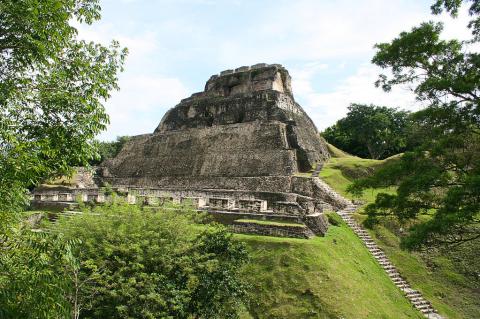
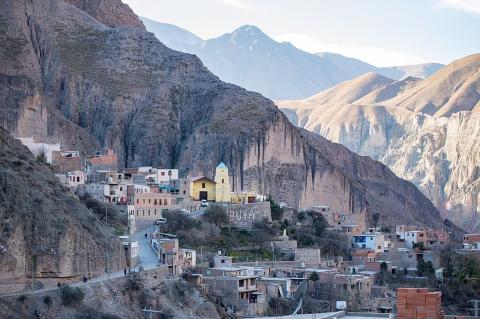
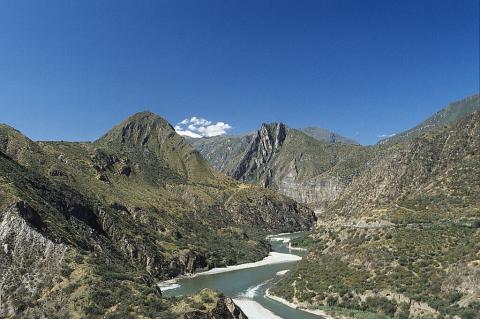
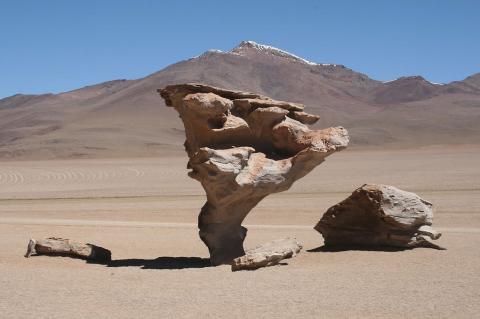


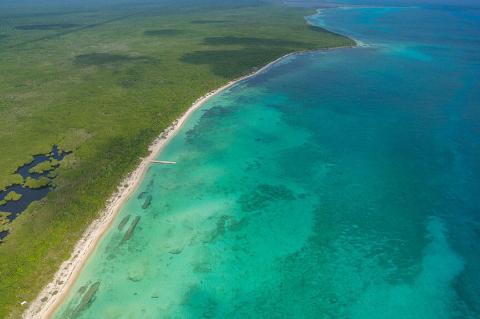
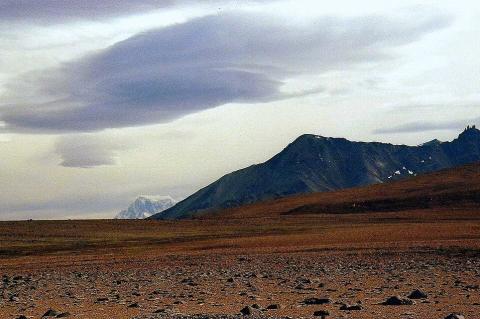
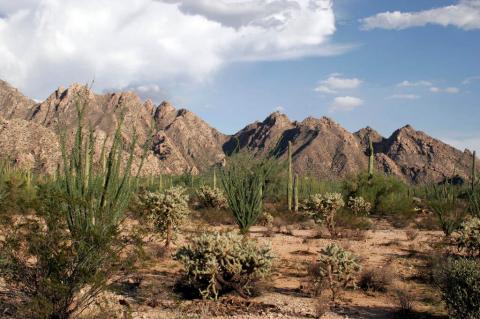
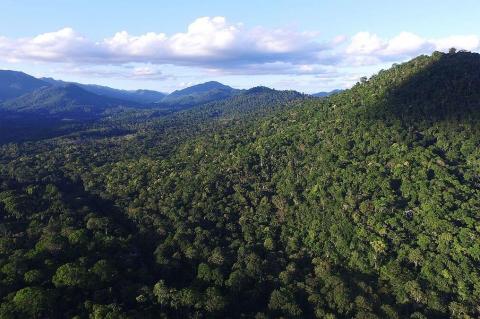
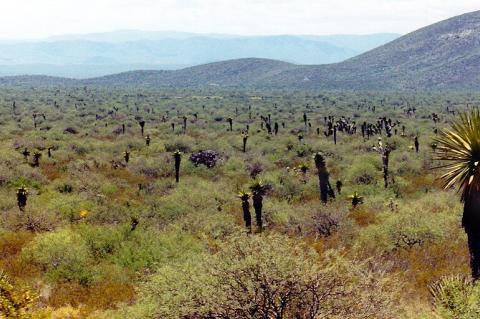

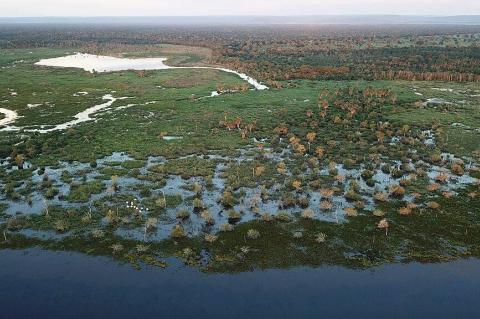
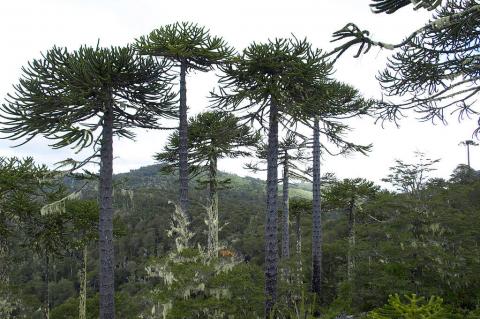

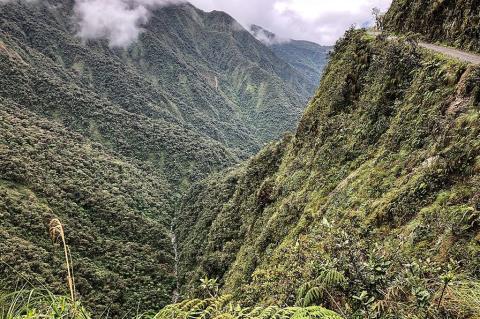
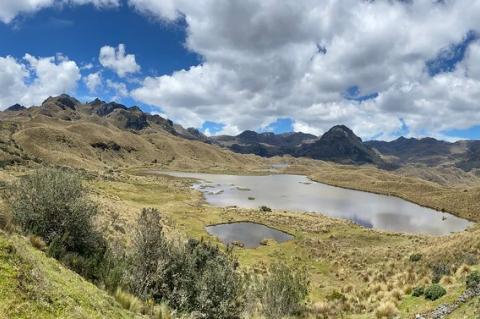
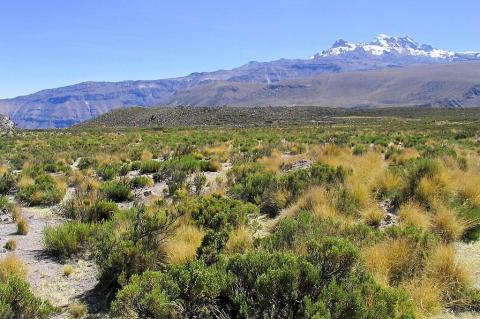
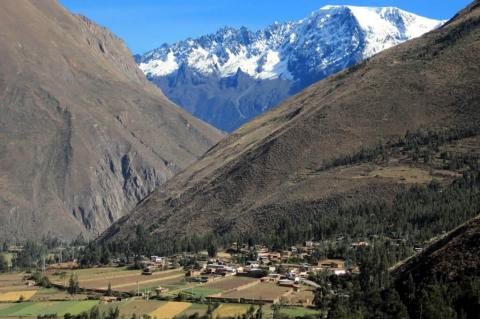
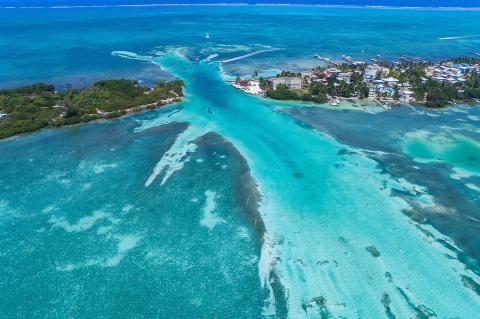
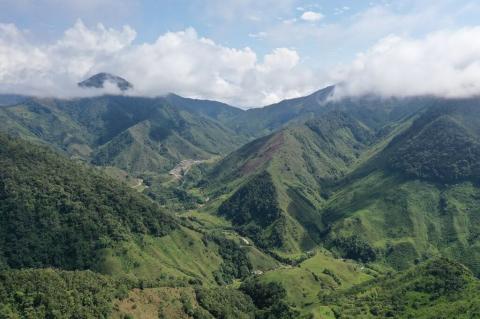
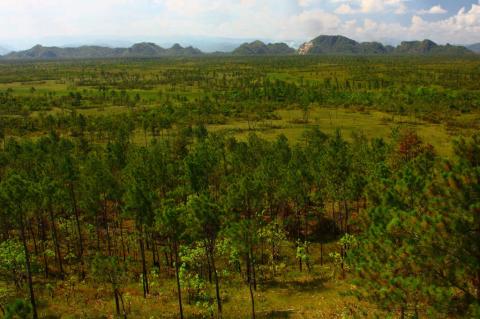
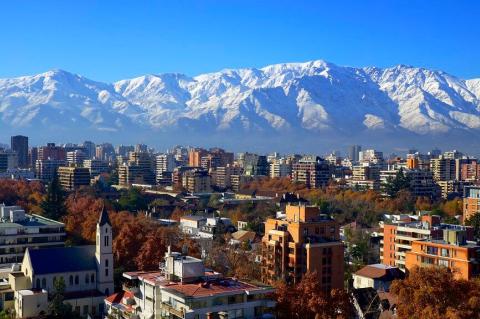
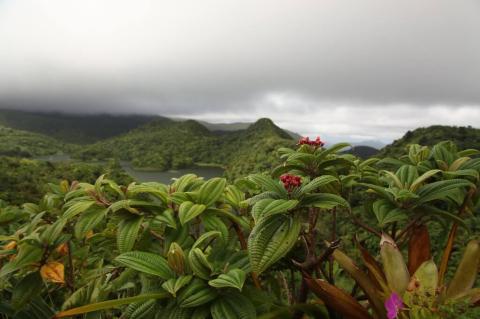
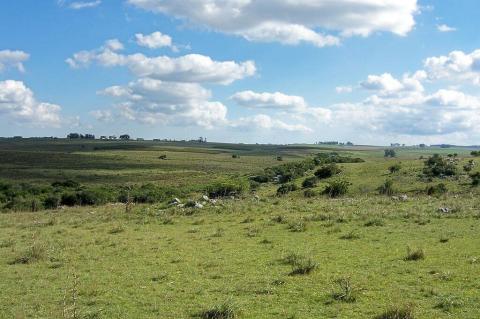
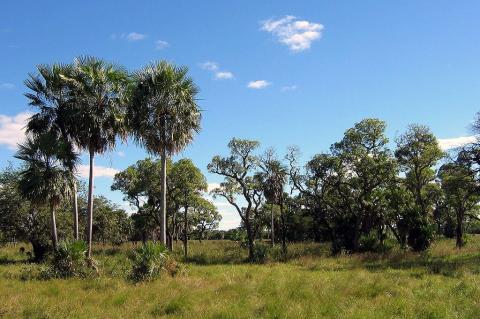

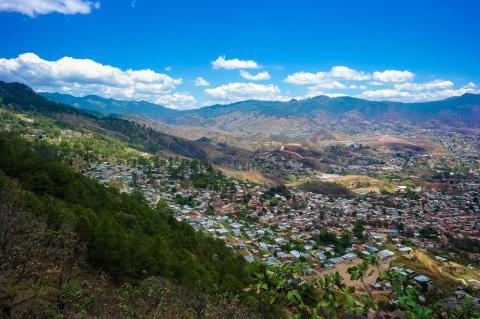
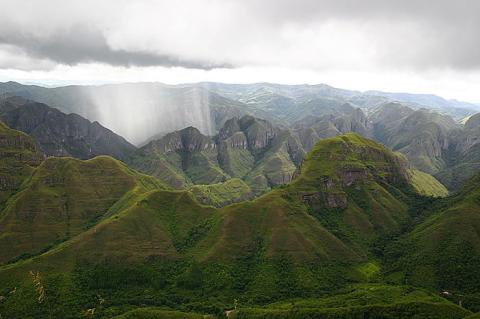
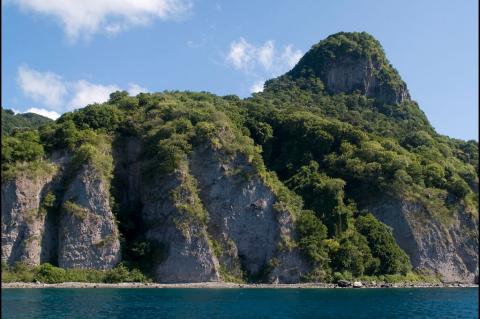
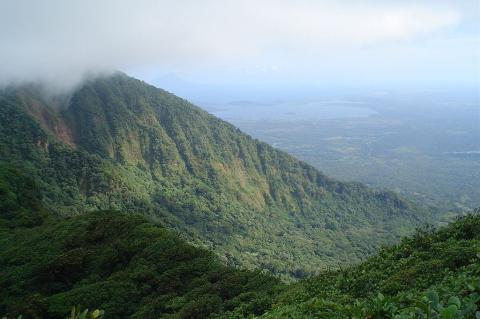
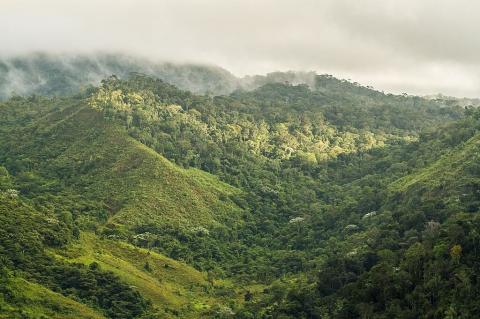
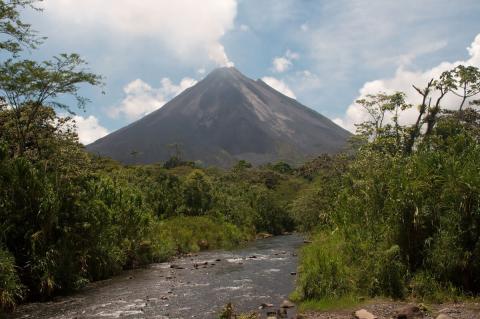
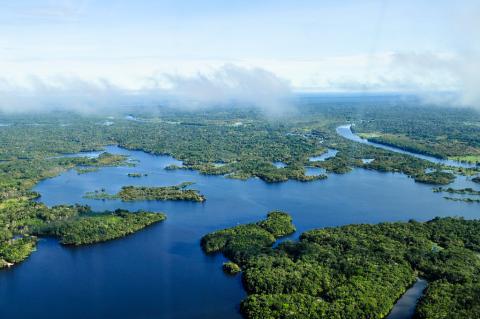
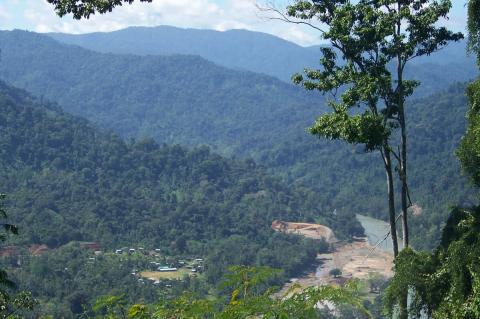
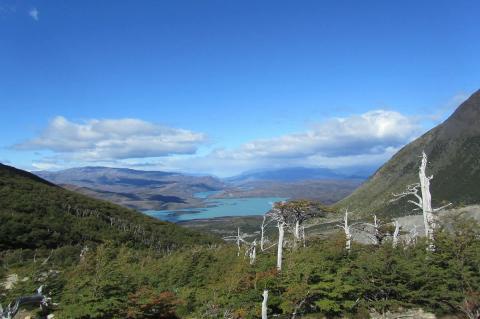


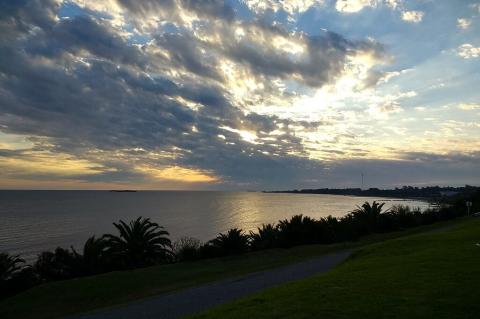
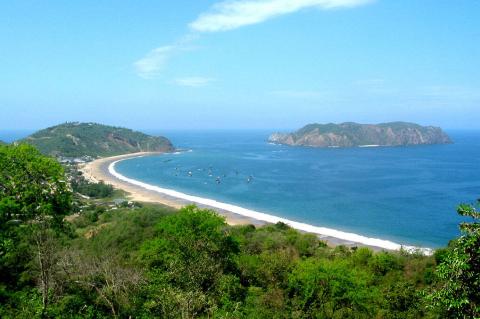
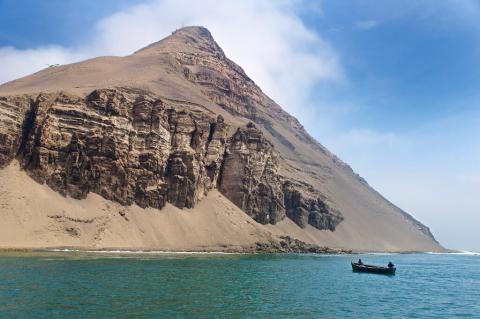
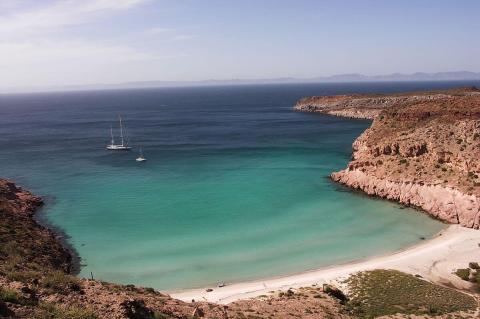
![Sierra Madre Occidental, looking across Rio San Ignacio from near the village of Guajurana - via Wikimedia Commons by Cataclasite [CC BY-SA (https://creativecommons.org/licenses/by-sa/3.0)] Sierra Madre Occidental, looking across Rio San Ignacio from near the village of Guajurana](/sites/default/files/styles/medium/public/sierra_madre_occidental_volcanics_opt.jpg?itok=i6dbEcEE)
